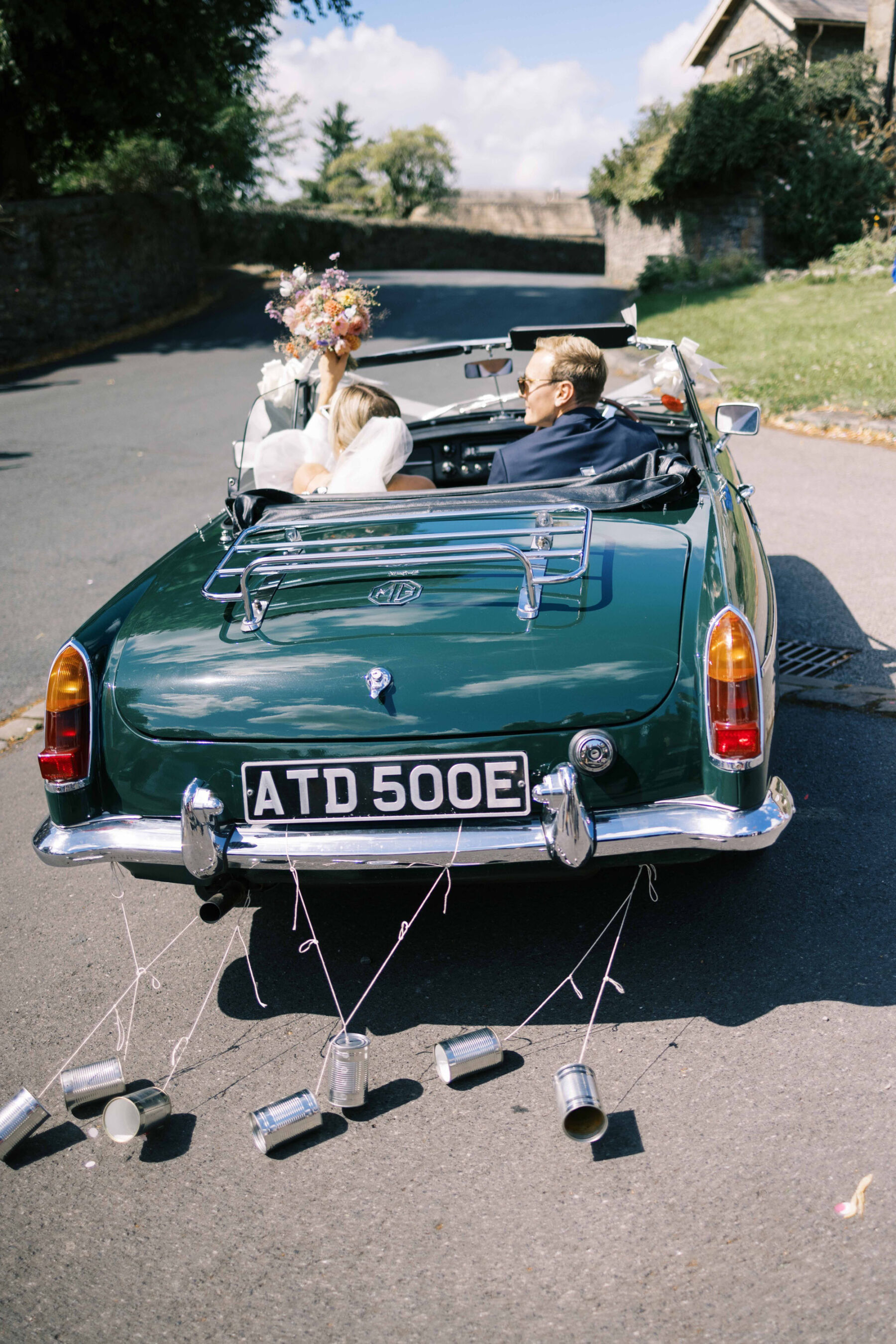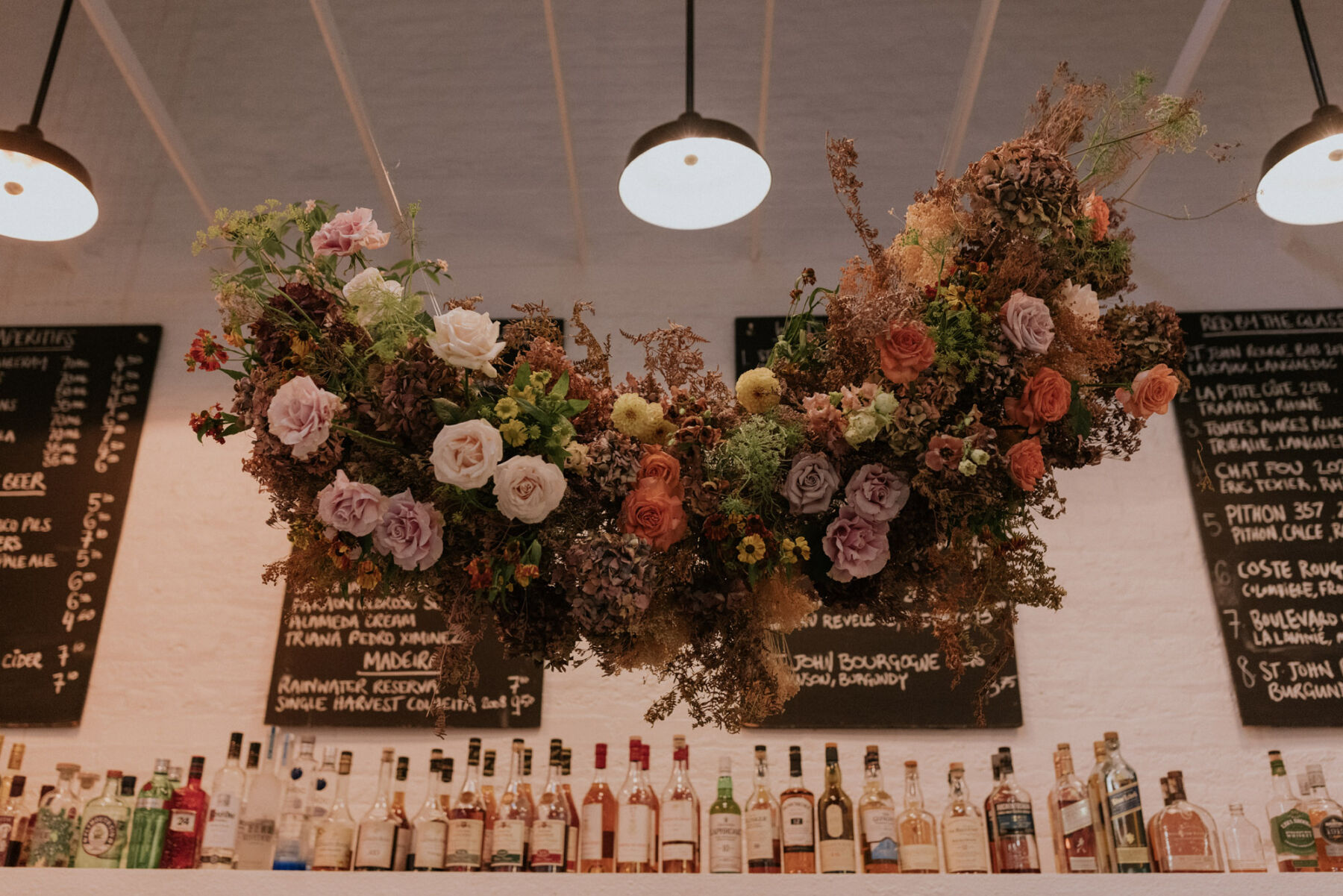The Floral Trends Report is a collection of thoughts and analysis written by industry experts, from artisan growers to high street shop owners to luxury studio designers. While each of our contributors celebrates a wealth of experience and knowledge in their field, you’ll see everyone in this report openly share the new challenges they face in the floral industry today with admirable grace and candour.
We are going to take an in-depth look at how these challenges, and the resulting creative genius that is born from the squeeze of necessity, may play out within your wedding.
The report does not profess to be a manifesto of what’s hot and what’s not. Nothing is ever that definitive in love and flowers, and who are we to judge why the heart pulls you towards one style over another? However, I will signpost specific floral species that sets our hearts aflutter, because we’re all happy to be seduced by gorgeous things, even if they are born of logistical issues that inspire certain trends or moods du jour.
So, nestle in and join me as I slide into the DMs of growers, florists, stylists and retailers to ask what’s going on, why does it matter, and how on Earth should a newly-engaged couple (potentially oblivious to the intricacies and nuances of the floral industry from seed to bouquet) know how and where they should invest their passion, energy and cash.
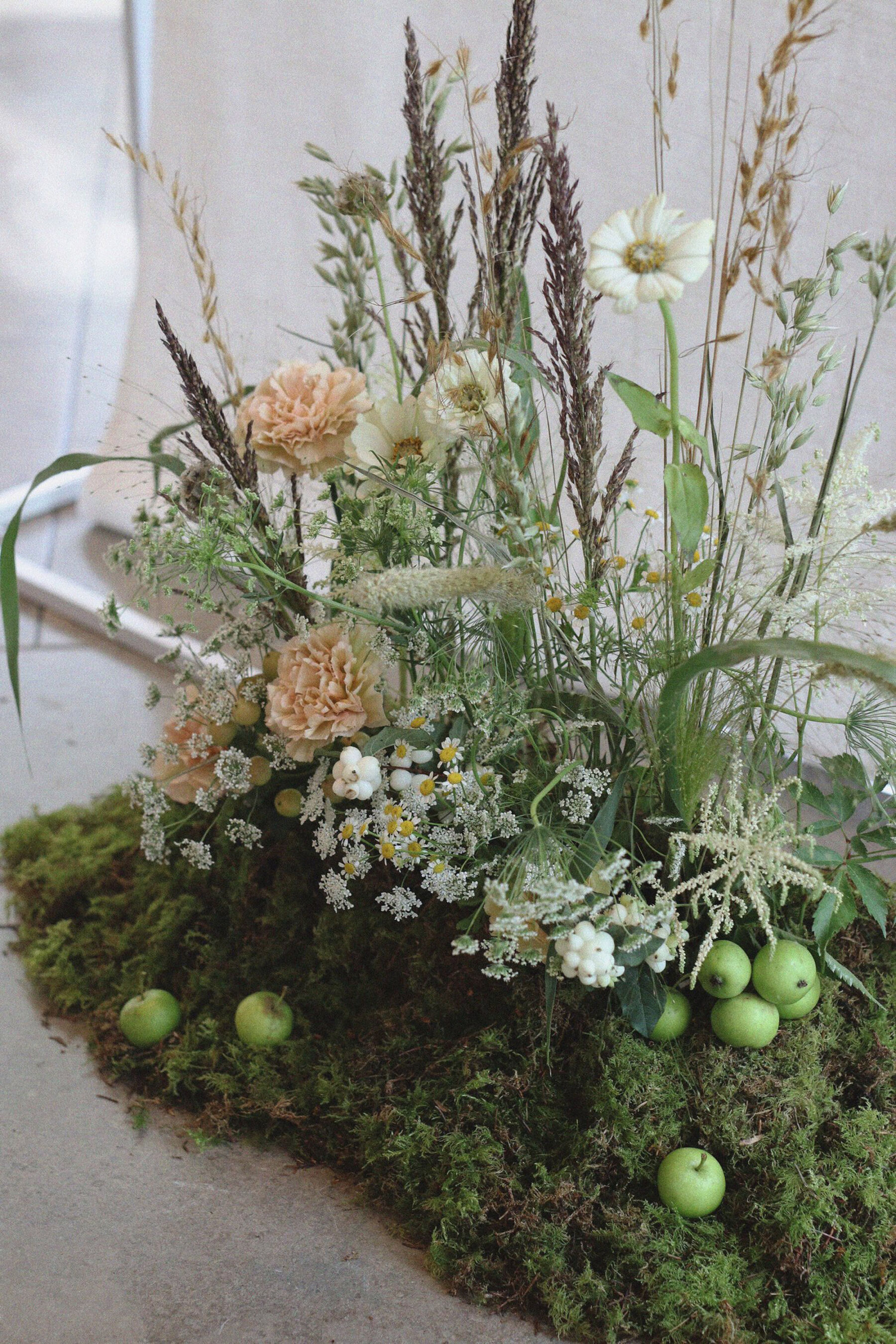
Looking Back
To ground ourselves in a little context, we will first have a quick look back over 2022. The last time I compiled this report, at the tail-end of 2021, we were wearing facemasks to pop into Tesco…
“Upon publication day of this document [1st Dec 2021), it has become mandatory to wear masks in shops and on public transport once more in England. A cold shiver runs through me. I close off the report with such a hopeful heart that caution over the next few weeks or months leads to the buoyant, celebratory wedding season 2022 has promised to be.” Charlotte Argyrou
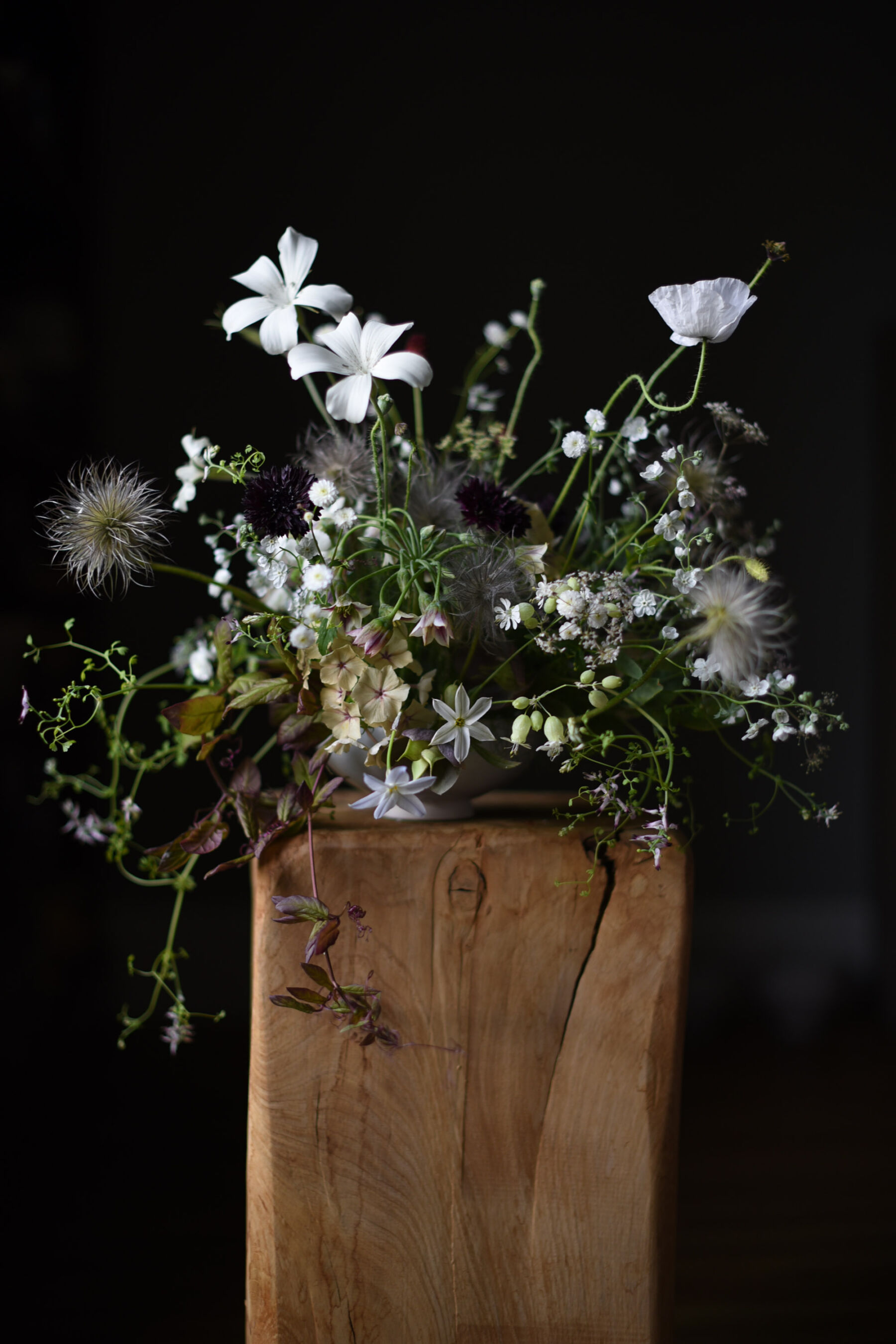
And it did. After a year of uncomfortable contorting of business models, quickfire launching newly-adapted products and services, accommodating cancellations, postponements and restrictions, summer of 2022 was wild. From her floral farm in Norfolk, Cel Robertson of Forever Green recalls:
We still had weddings on the books for 2022 that had originally been booked for 2020, and many of our florist customers were in a similar position. This meant that we were attempting to supply a larger than average number of events through the year. 2021 had been a challenge, and 2022 wasn’t going to be any easier! By the end of the summer, with all of the rolled-over weddings finally delivered, there was a palpable sense of relief that I was able to close the door on. Cel Robertson, Forever Green
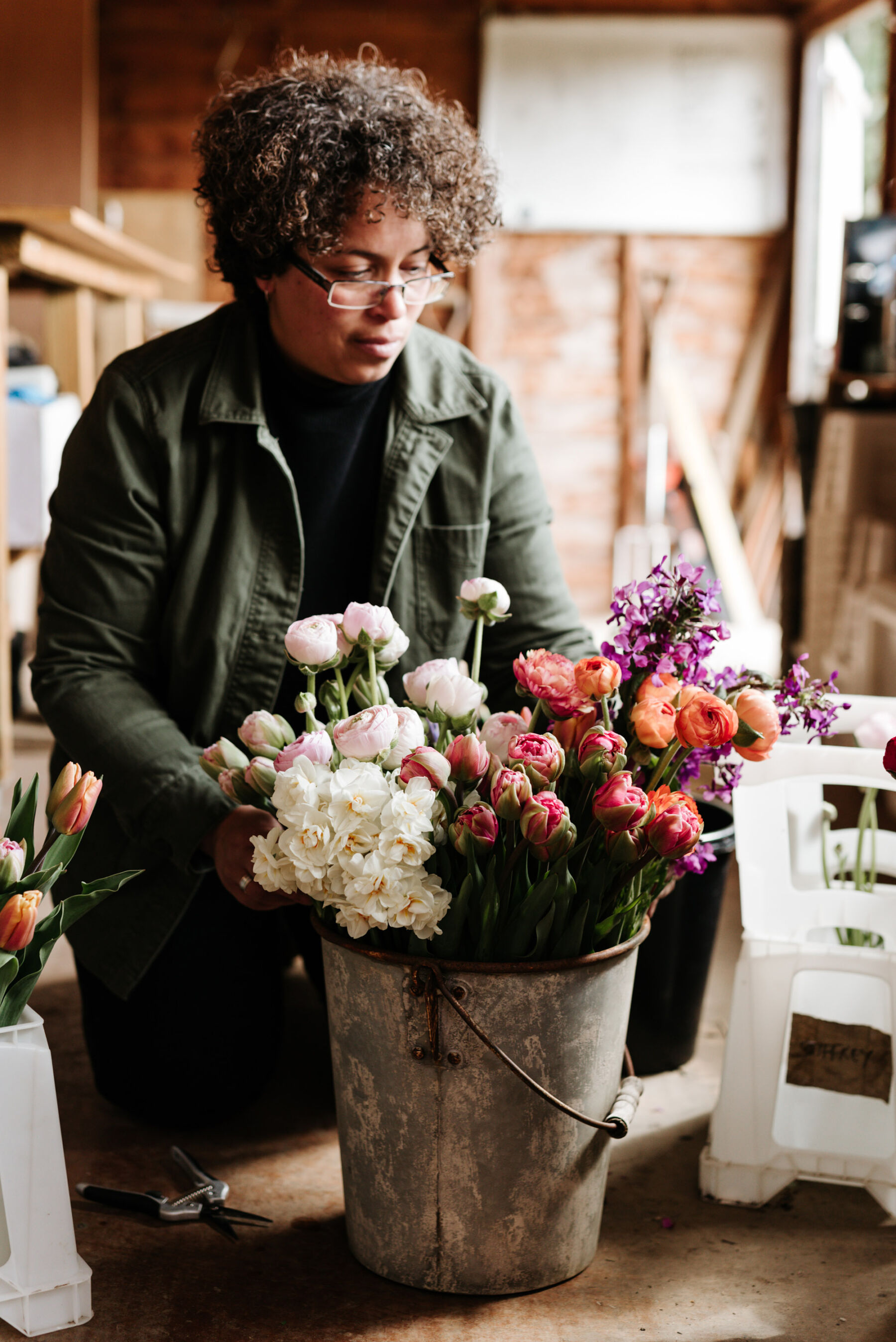
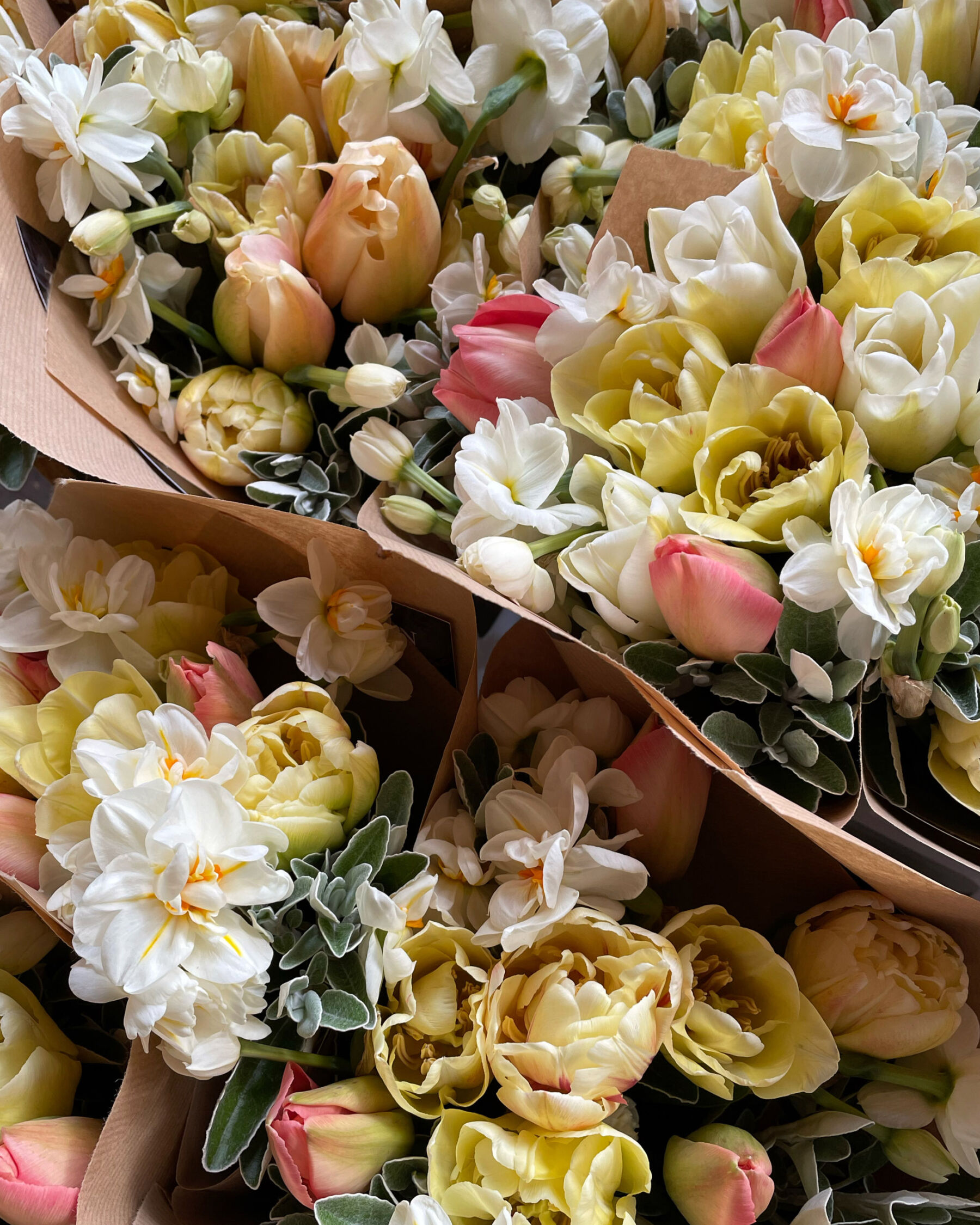
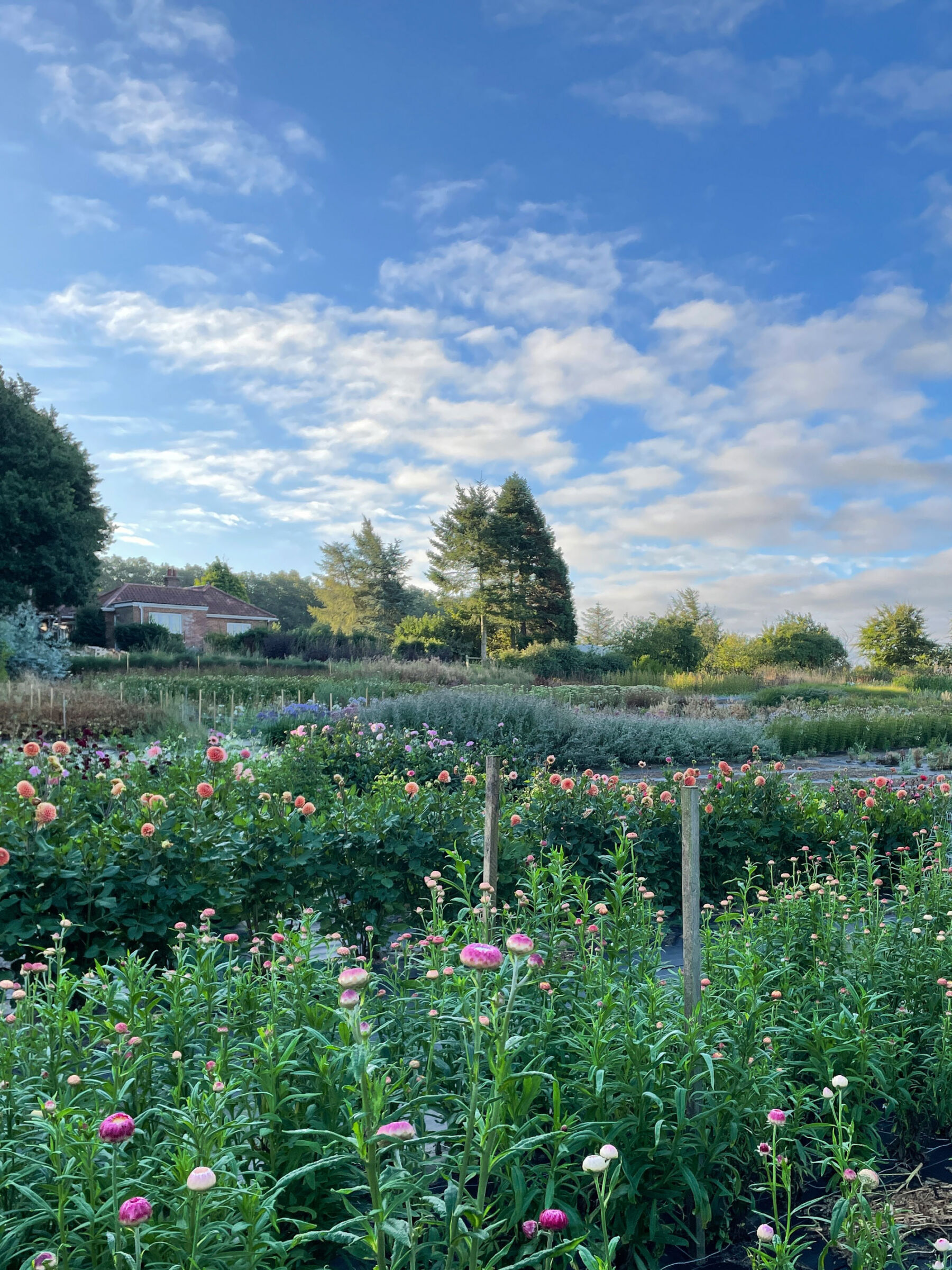
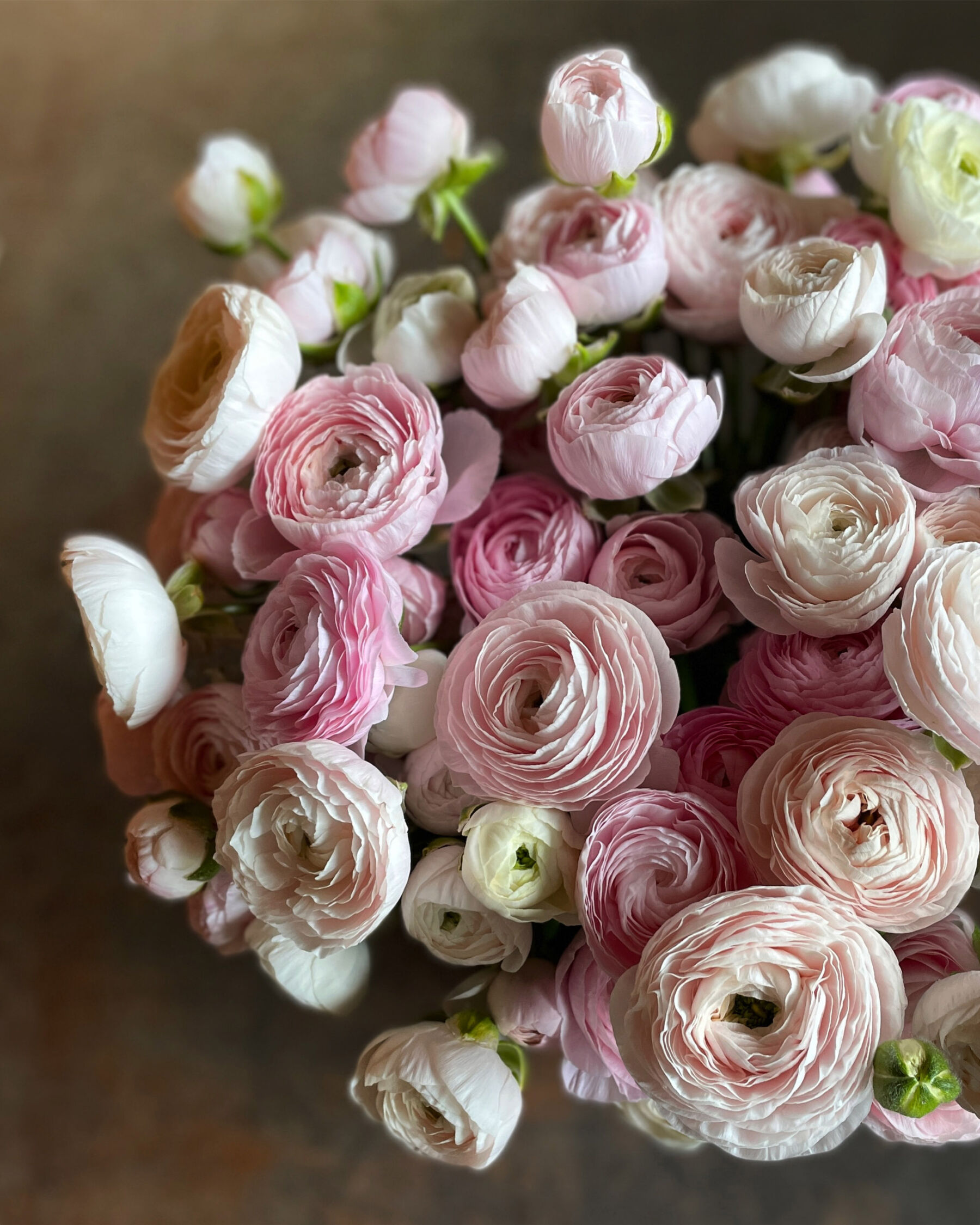
Liz Inigo Jones at London studio floristry Blue Sky Flowers, describes the test of “going into a busy year from a crazy year, keeping up the anticipation for our couples who had moved and sometimes moved again – most couples were happy to do their original design but some used the extra time they had to reconfigure things and that was a little challenging on occasion!”
2022 pushed many suppliers’ limits of what they previously considered ‘fully booked’. Double headers (industry lingo for working at two weddings in one weekend) became commonplace, not exceptional. Yet countering the joy of returning to work and full-scale weddings came ugly battles with extreme weather, rising costs and critical supply issues.
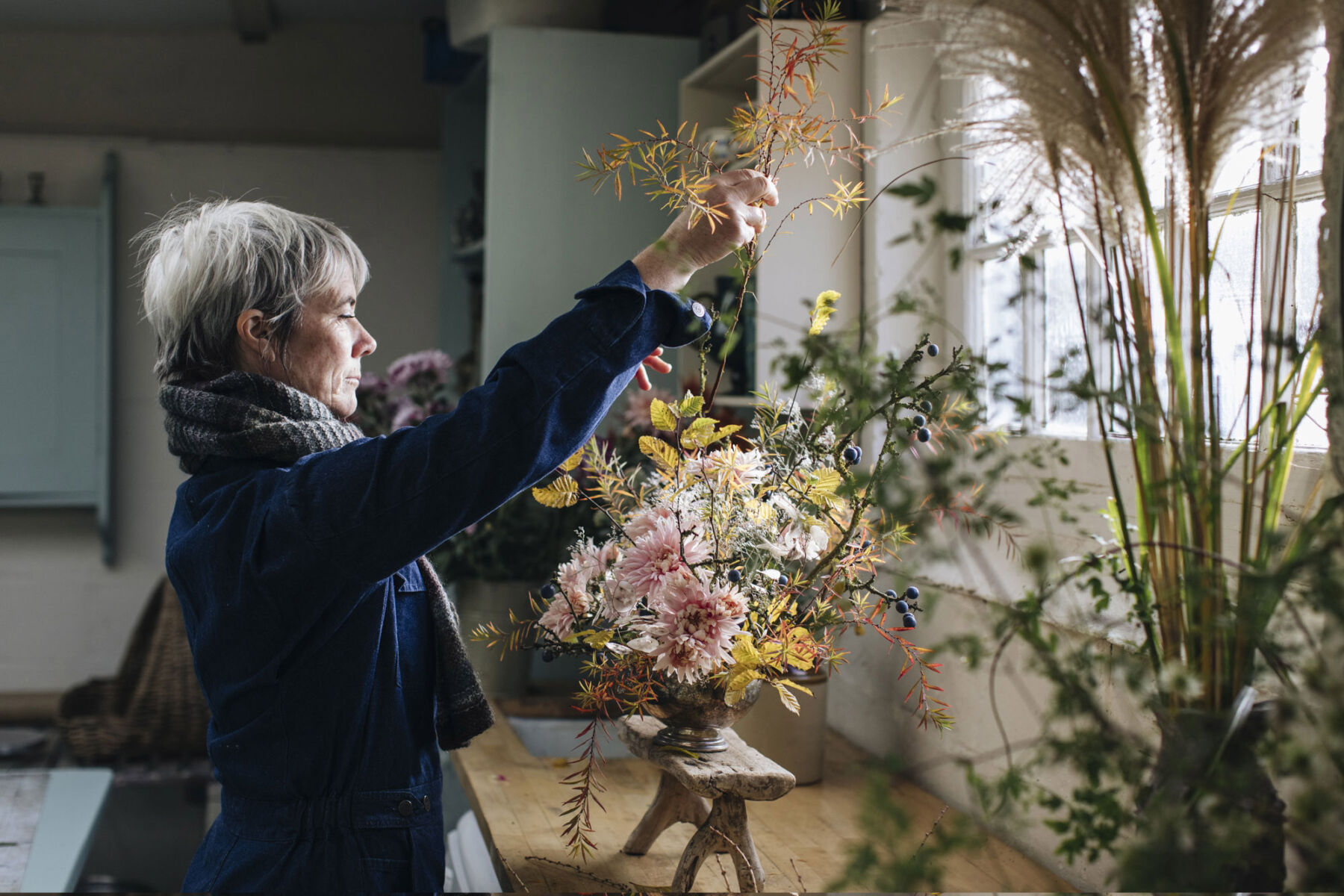
All of these, though unglamorous and entirely contrary to the spirit of a wedding, are demanding of page space in order to achieve the best florals for your 2023 celebration. Horticultural broadcaster, writer and floral studio owner, Hazel Gardiner, elegantly describes how her business confronted these issues:
As a gardener and designer every year brings fresh knowledge, innovation and artistic opportunities for myself and the design studio, igniting our energy. We are a seasonal florist but last year took this further by introducing the word responsive into how we describe our work. Hazel Gardiner, Hazel Gardiner Design
Suppliers had to respond to survive and thrive, and with admiration we are going to examine the result of this grit and graft.
Floral Notes of Advice:
- Suppliers have had to be responsive to new and extreme circumstances
- Creativity and innovation flourished in the face of last year’s challenges
- All your floral team – from those growing flowers to those selling them on the high street – are adapting on your behalf. Trust their experience and advice about seasonality, availability and budget. If they say you can’t have a particular species, it’s not them being tricky. It is to minimise the risk of last-minute disappointment.
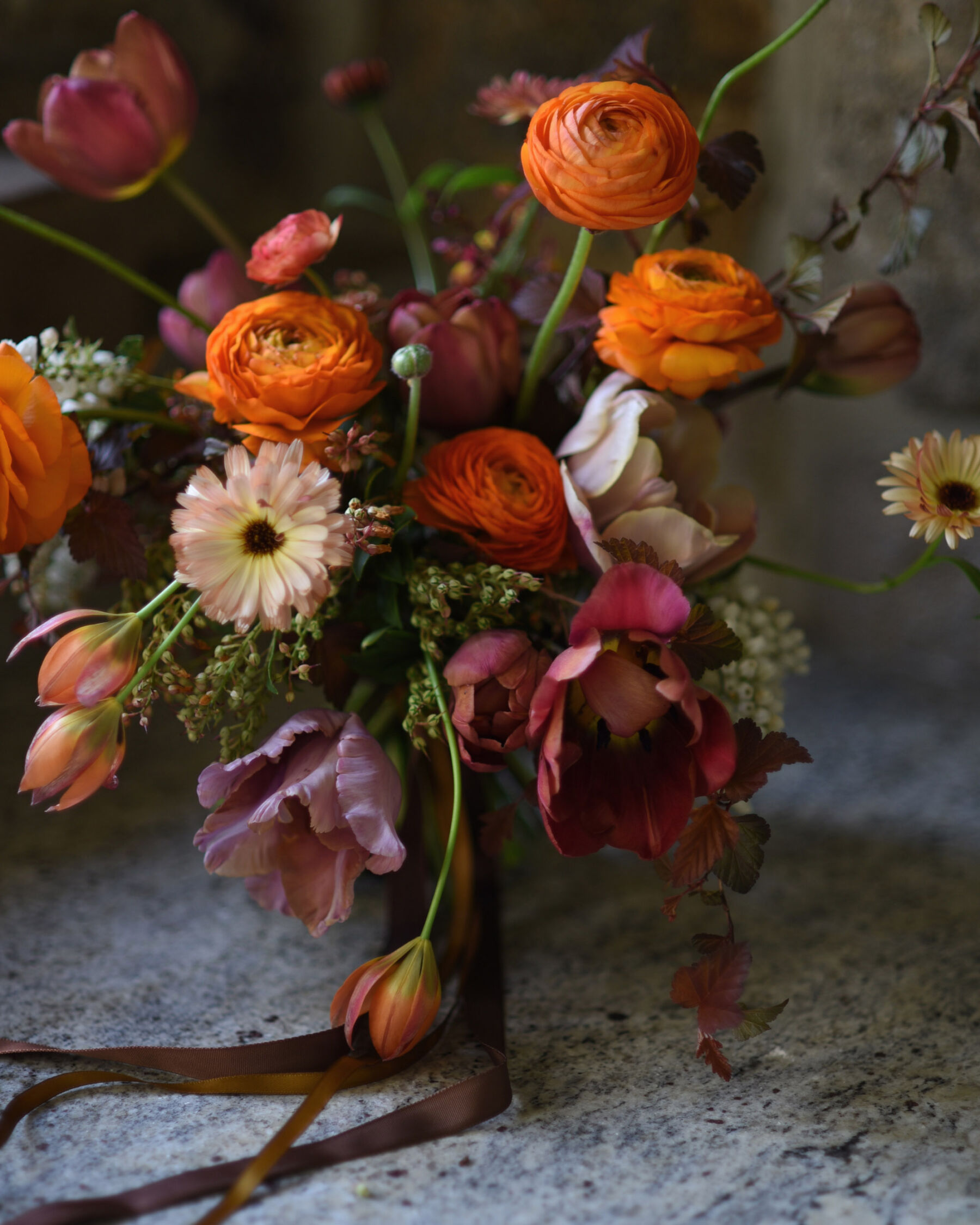
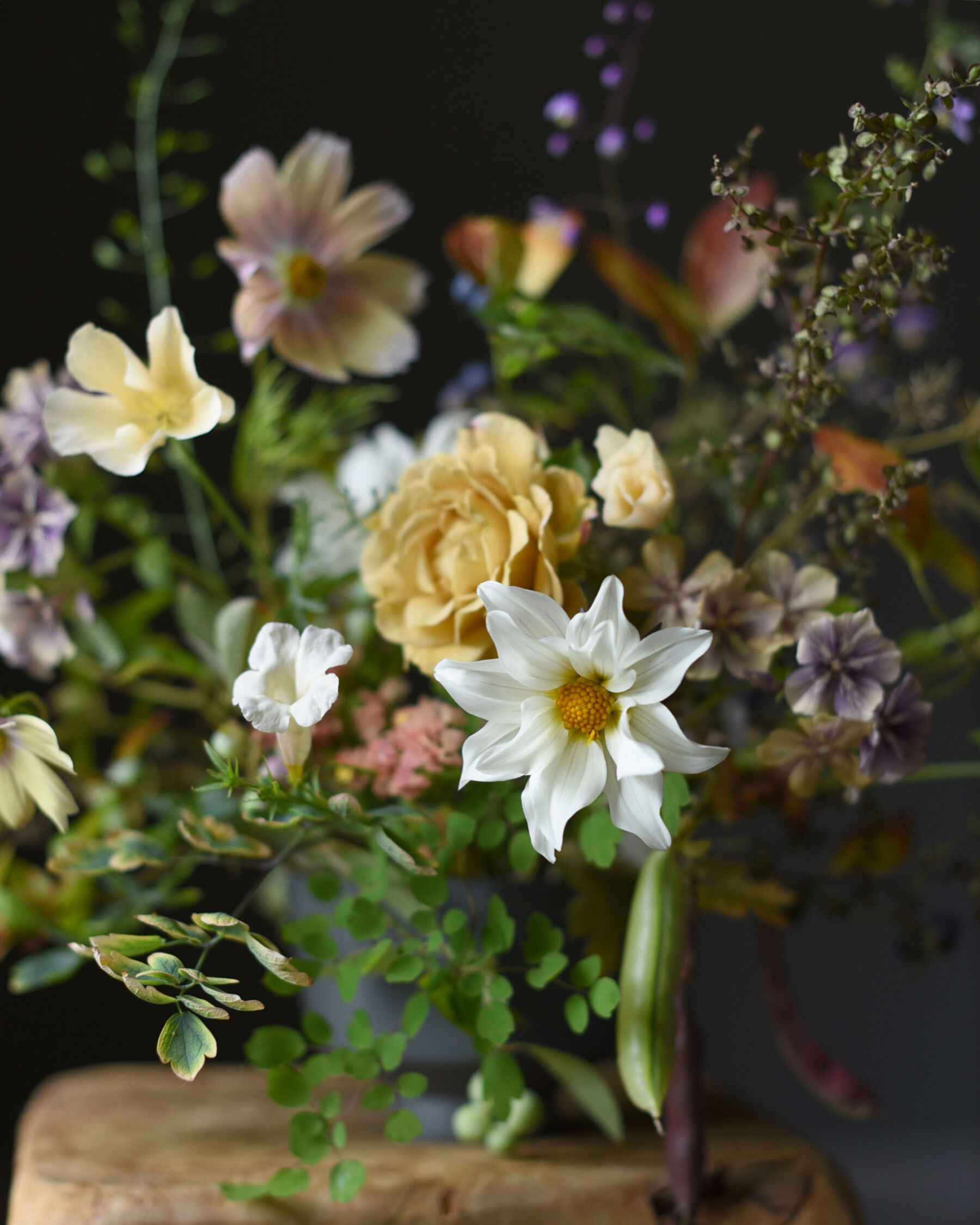
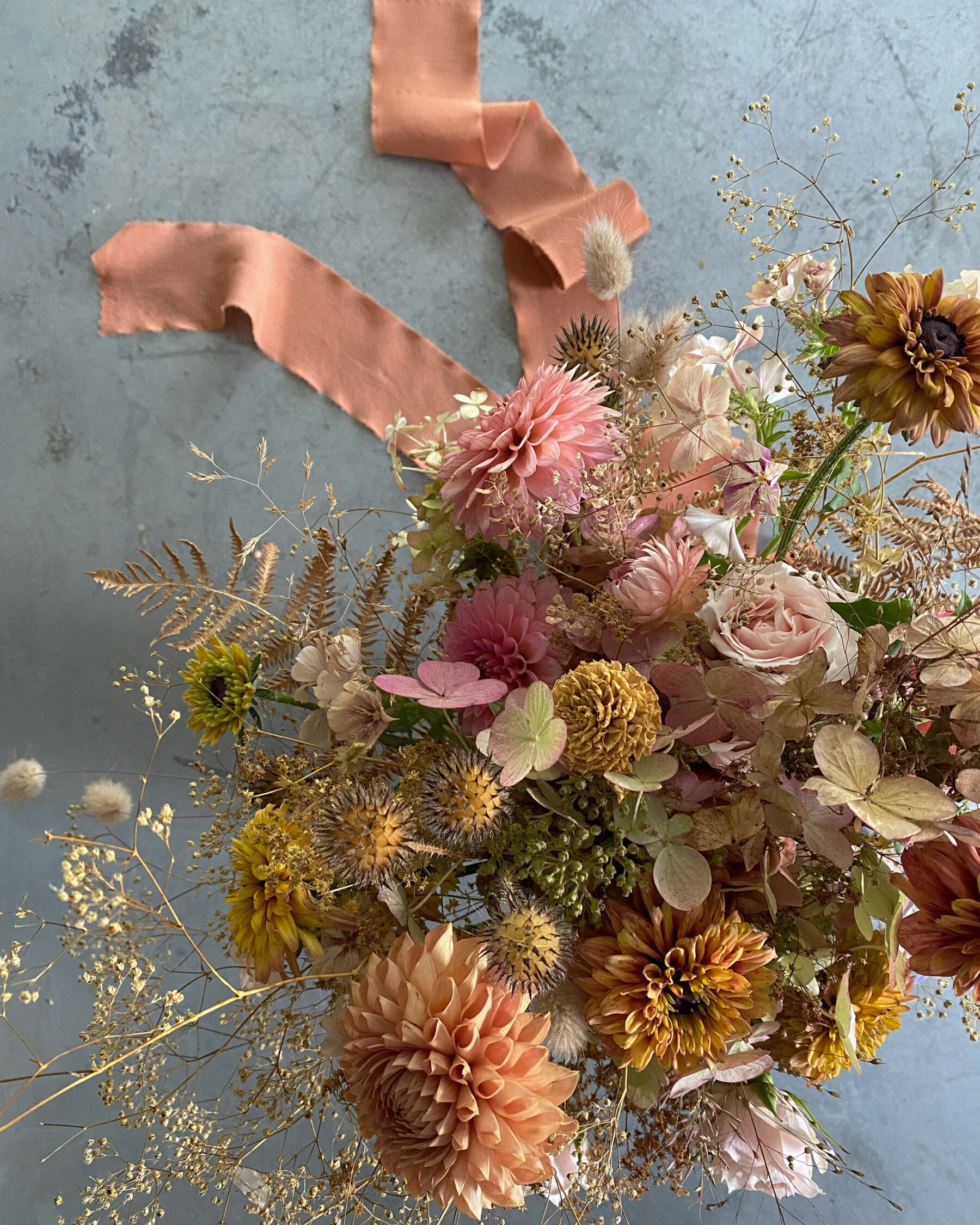
Your Wedding Flower Budget
Over the past couple of years, I’m become aware of a specific tone of voice florists use as they reference Pinterest. All are grateful for the handheld database of quality images which serves as a communication device, bridging clients’ hopes with florists’ actuality. A picture tells a thousand words, they say, so sharing an image clarifies aspirations, regardless of whether it is attainable or not. With the ideal scenario established, florists can then skilfully and kindly present a proposal that nudges expectation towards reality.
Hattie at Honour Farm Flowers, West Yorkshire, acknowledges that couples are far more in touch with the aesthetic storytelling of their day than ever before and there is “new desire for clients to lead the styling of their wedding in an attempt to be entirely unique – probably due to the rise of Pinterest, Instagram and TikTok. With that unfortunately comes a new set of challenges, reigning in client expectations and often turning down jobs due to enthusiastic briefs but unrealistic budgets.”
It is not just a case of the old champagne ideas, lemonade budget mentally. People have always been overreaching in that regard. But 2023 serves a devastating blow as to what your money actually buys you. Everything feels expensive. In December, I popped into our local high street florist, seeking a few blooms to create DIY posies along my dinner table for a kitchen table supper with pals. Three roses, a couple of stocks, a bit of leafiness, £24. I winced as I tapped my contactless, but hoped I was appeasing my own moral code of shopping small and local (at an independent florist, though undoubtedly the species I selected were imported).
I asked Liz at Blue Sky Flowers about conversations she is having on repeat with her florist friends:
How much is that flower?! Why is everything so expensive?! Why is everyone getting married on the same date in June?! Who’s up for a G&T?! Liz, Blue Sky Flowers
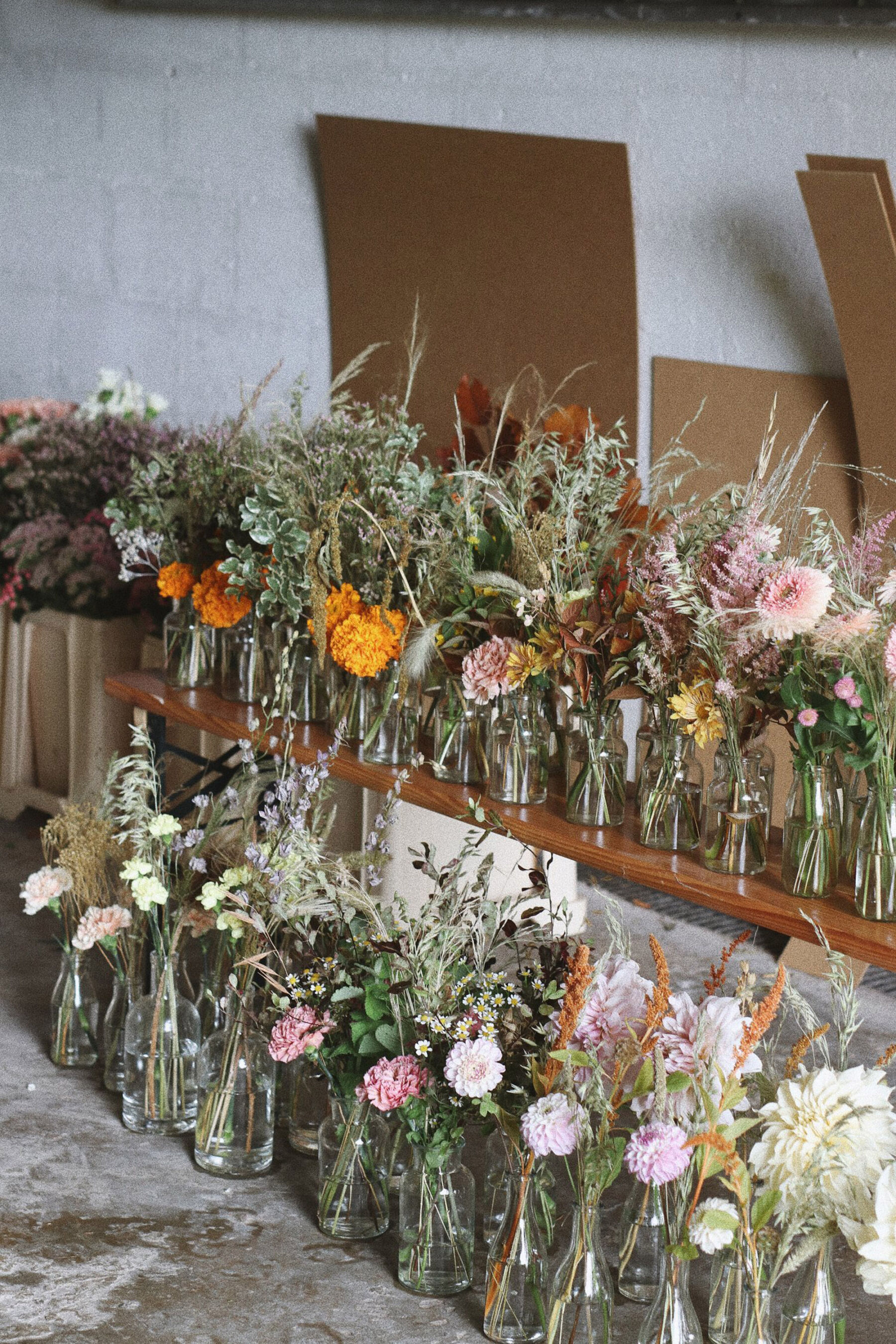
Barbara Smith of Wild Flower Workshop in Scotland writes; “Value for money has always been a key consideration for all florists’ clients and rightly so. But now, more than ever, clients are wanting to be clever with how they spend their money. This undoubtedly is going to be the most you’re ever going to spend on flowers, so getting it right and making it count are always going to be a prerequisite.”
“I’m keen to get my clients to think about how they use the various spaces and not spreading their budget too thinly across them. Where is the focus? What are the key moments where your flowers are going to bring most joy? Perhaps one big installation as a focal point rather than lots of tiny elements will bring the impact and drama that sets your wedding apart.”
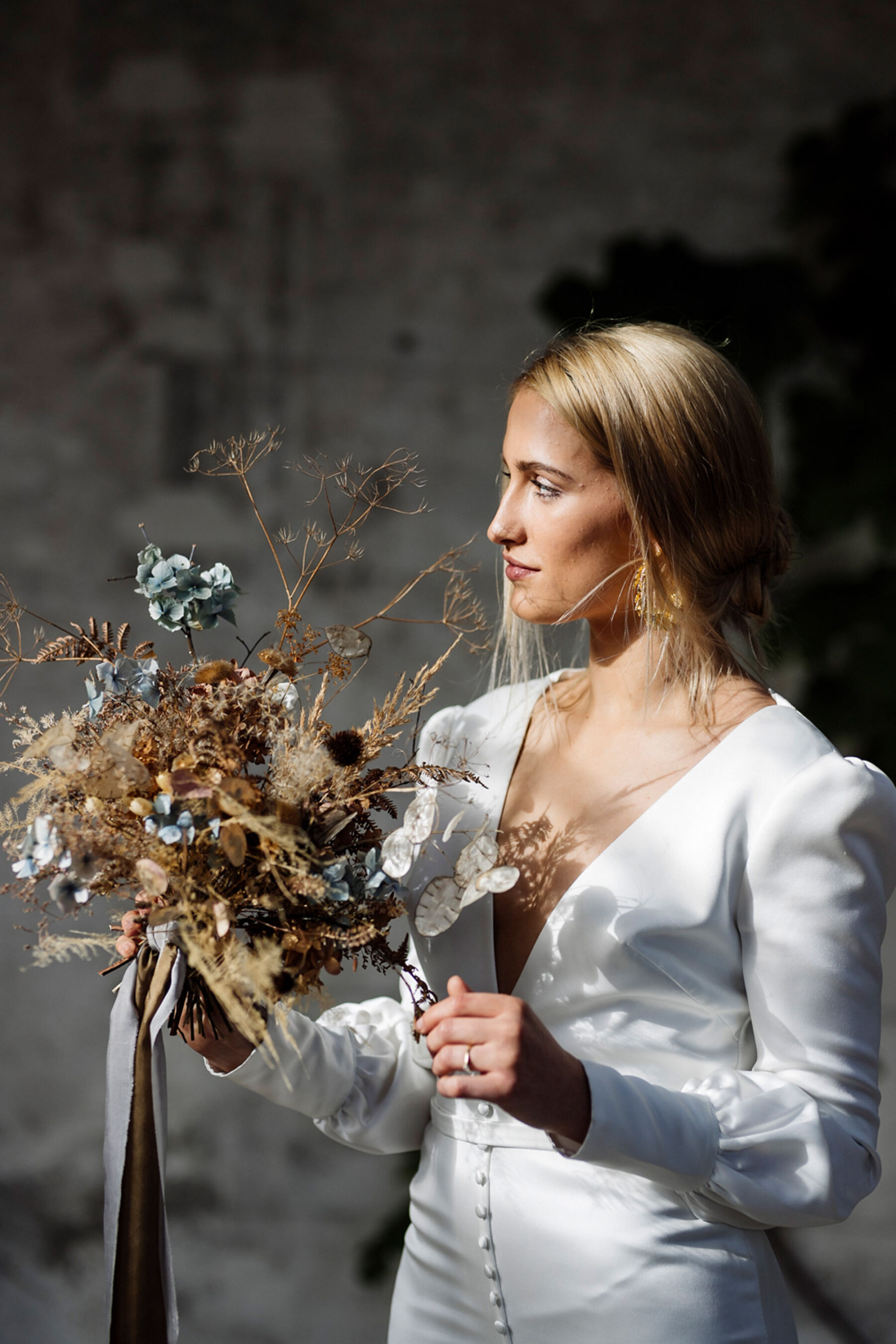
Isobel at Pickleberry Flowers paints a colourful picture; “Gone are the days of jam jar filling and dotting them to fill lonely, empty spaces. Instead, it’s about making a dramatic focal point, filling the space with rambling foraged greenery, chunky tree branches, masses of a seasonally grown flowers teamed with the unusual foraged hedgerow finds such as berries and fruits.”
“Take the inside of a church for example. It used to be about doing a couple of pedestals and a few smart pew ends, the bits and pieces. Instead let’s make the aisle feel like you’re walking down a garden runway and focus the eye on that area, let this be the stand out.”
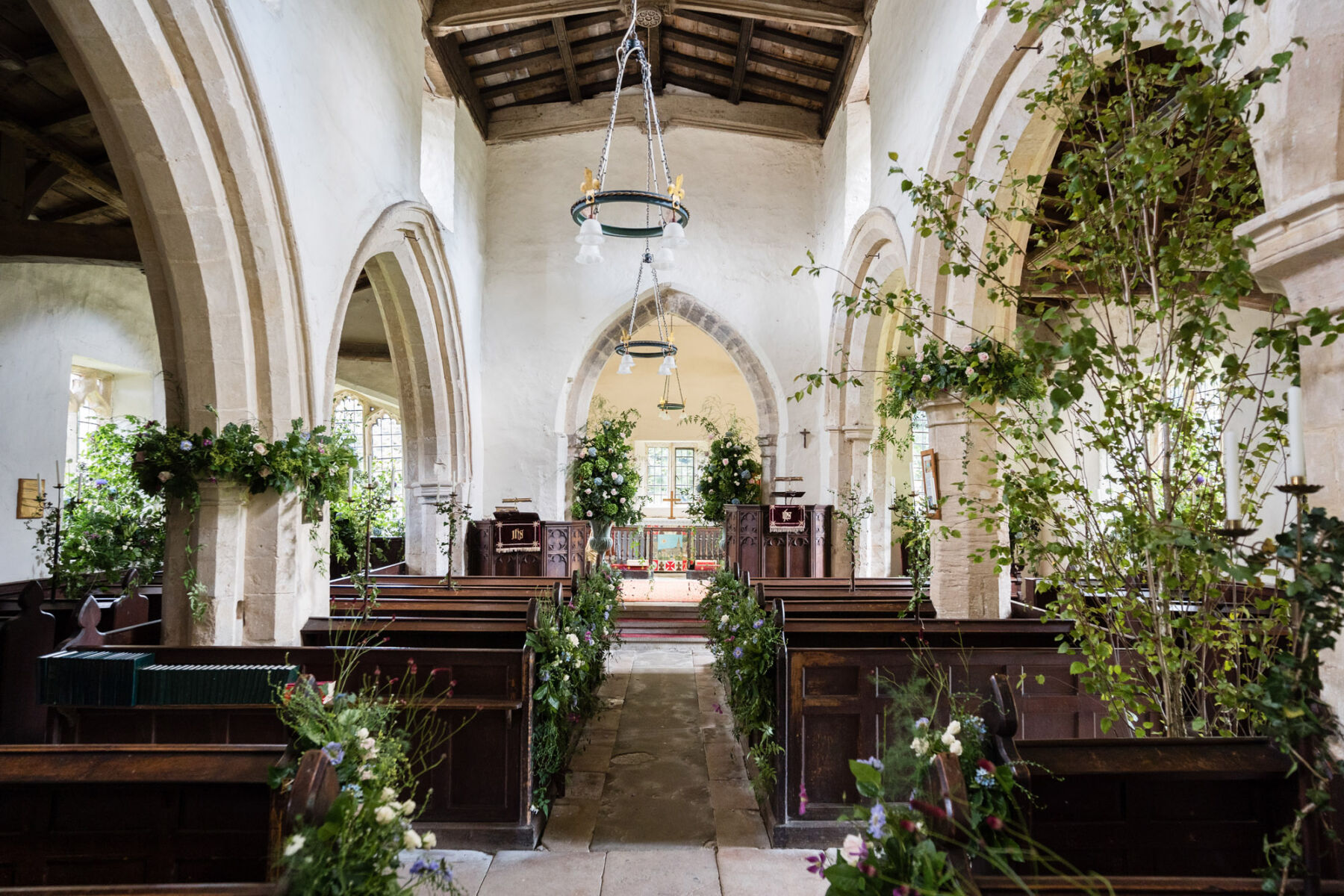
“I think with the cost of living, couples are very conscious of their budget and many are opting for hiring trees, ordering our DIY buckets and finding ways to repurpose arrangements,” states Rachel Siegfried of Green and Gorgeous Flowers, Oxfordshire. Liz at Blue Sky Flowers adds, “It is just about managing their expectations and reinforcing what is possible and suggesting repurposing where possible… although if I never had to move an arch again, I’d be sooo happy!“
Expecting your florist to subtly and niftily relocate a 10-foot floral arch from ceremony to reception may be an ask too far. Instead, pose the question and work collaboratively with your florist to plan smooth and stress-free solutions ahead of time.
In order to maximise bang for buck, 2023 will see a requirement for couples to introduce some flexibility into their floral designs by fully immersing themselves in the skill and experience of their suppliers.
Floral Notes of Advice:
- Your floral industry suppliers are facing huge increased costs themselves
- Choose impact over quantity to cut overall costs
- Consider hiring elements such as trees and plants
- Repurpose floral arrangements throughout the wedding day
- Trust your florist’s experience regarding where to make cost-cutting compromises and what can successfully be repurposed.
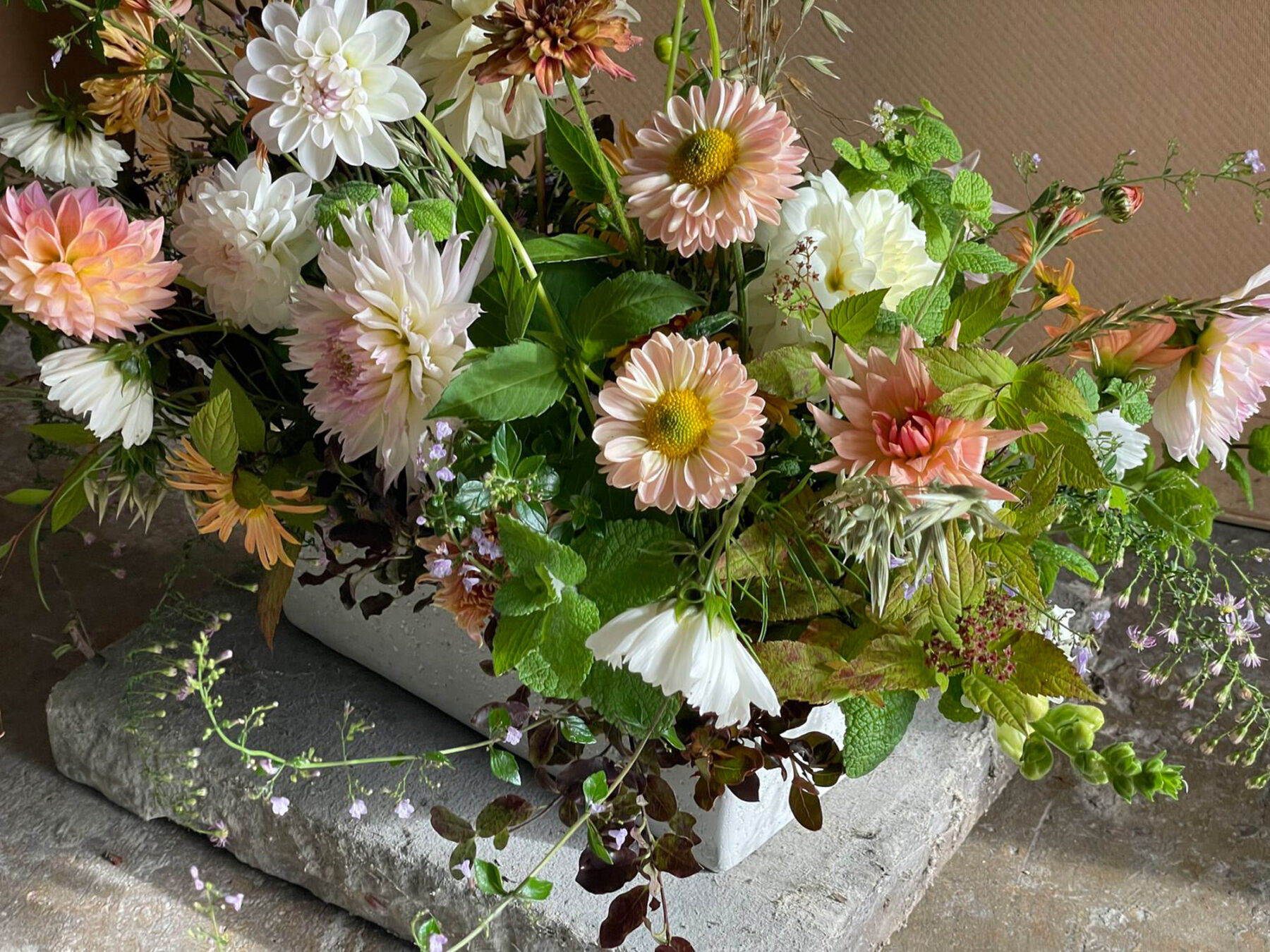
Locally Sourced and Seasonal Wedding Flowers
The subject of cost leads us to a discussion regarding British flowers (written for a British readership, but can be reinterpreted to ‘locally-sourced’ if you are planning a destination wedding or are reading from overseas). You hardly need to be glued to the news to be aware of a grim list of issues regarding import/export, energy crisis and transportation. The financial cost and unreliability of importing flowers is making British flowers all the more appealing. As Isobel at Pickleberry observes, “a positive is that the margin from imported flowers to the British ones, yes still have a price difference, but the gap is certainly closing.”
Events of the past couple of years have forced us to re-examine the word ‘cost’ and now must include cost to the planet. Environmental awareness isn’t a theme or a stylistic choice like it was largely treated a few years ago. It must no longer by niched-down to bohemian or rustic weddings, or exclusively associated with low budget events. Regardless of whether you intend to use DIY flower buckets from a small farm or spend tens of thousands with a high-end designer, it is a shared responsibility and one the British floral industry takes seriously. Barbara Smith of Wild Flower Workshop poignantly states:
I am noticing that my clients are increasingly conscious of sustainability asking where I source the flowers I use and understanding that seasonality is key to the process. Yes, you can get peonies in November, but they won’t be sustainably sourced and I certainly won’t be the florist to buy them for you. Barbara Smith, Wildflower Workshop
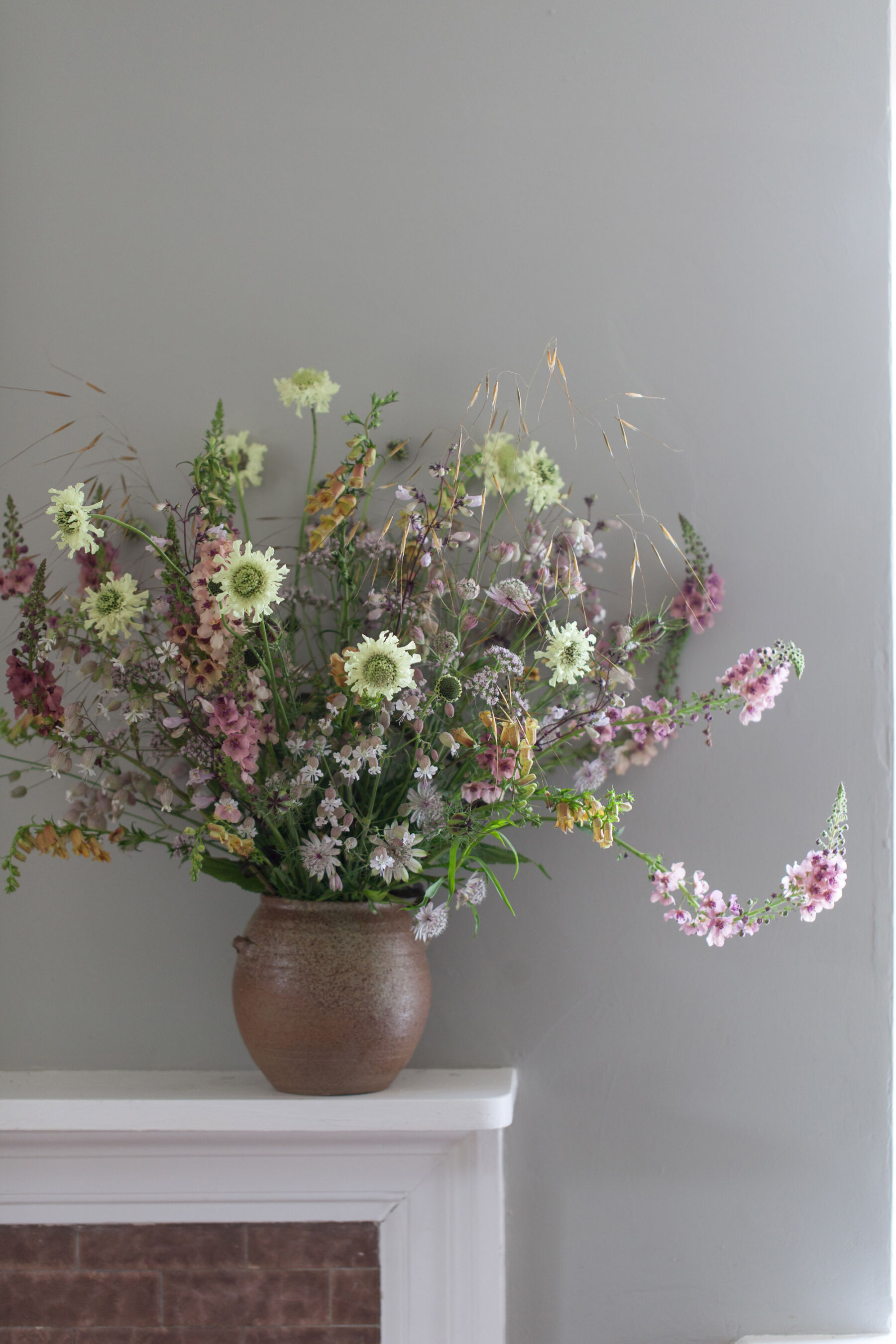
Fiona Haser Bizony runs Electric Daisy Flower Farm in Somerset and retails through a boutique of the same name in affluent London suburb, Highbury. Fiona’s ethos is resolutely “flowers should not cost the Earth”.
I asked Fiona to paint me a picture of seasonality out of whack; “It’s December and our studio is awash with evergreen as our Christmas elves work away on wreaths and swags, up to their armpits in fir cones and ribbons. That’s when I get the call from someone desperate to source fresh cut Sweet Peas for December 23rd. Honestly if any of you know Rumpelstiltskin, that’s who I looked like as I hopped and fumed around the studio.“
The magic of sweet peas is their fleeting existence. Only available in high summer, they are not a flower that travels well. Their delicate fragrance is evocative and nostalgic because it is so seasonal. Fiona Haser Bizony, Electric Daisy Flower Farm
“Sweet Peas in December that is just wrong, wrong, wrong. If Sweet Peas were grown in the UK they would need to be in a heated greenhouse to “force’ them into flower. Using fossil fuels to harvest flowers out of season, wrong. And if they were grown on the other side of the world in warmer climates, they would need to be flown here so they might stay fresh. Again all the carbon needed to get an out of season product to the UK, wrong.”
Fiona concludes, “My plea for 2023 is that we can truly work with the seasons. Weddings are so much about sharing the moment in time when two people get to celebrate their love for one another – let the flowers at the ceremony speak for nature and the earth and where we come from.”
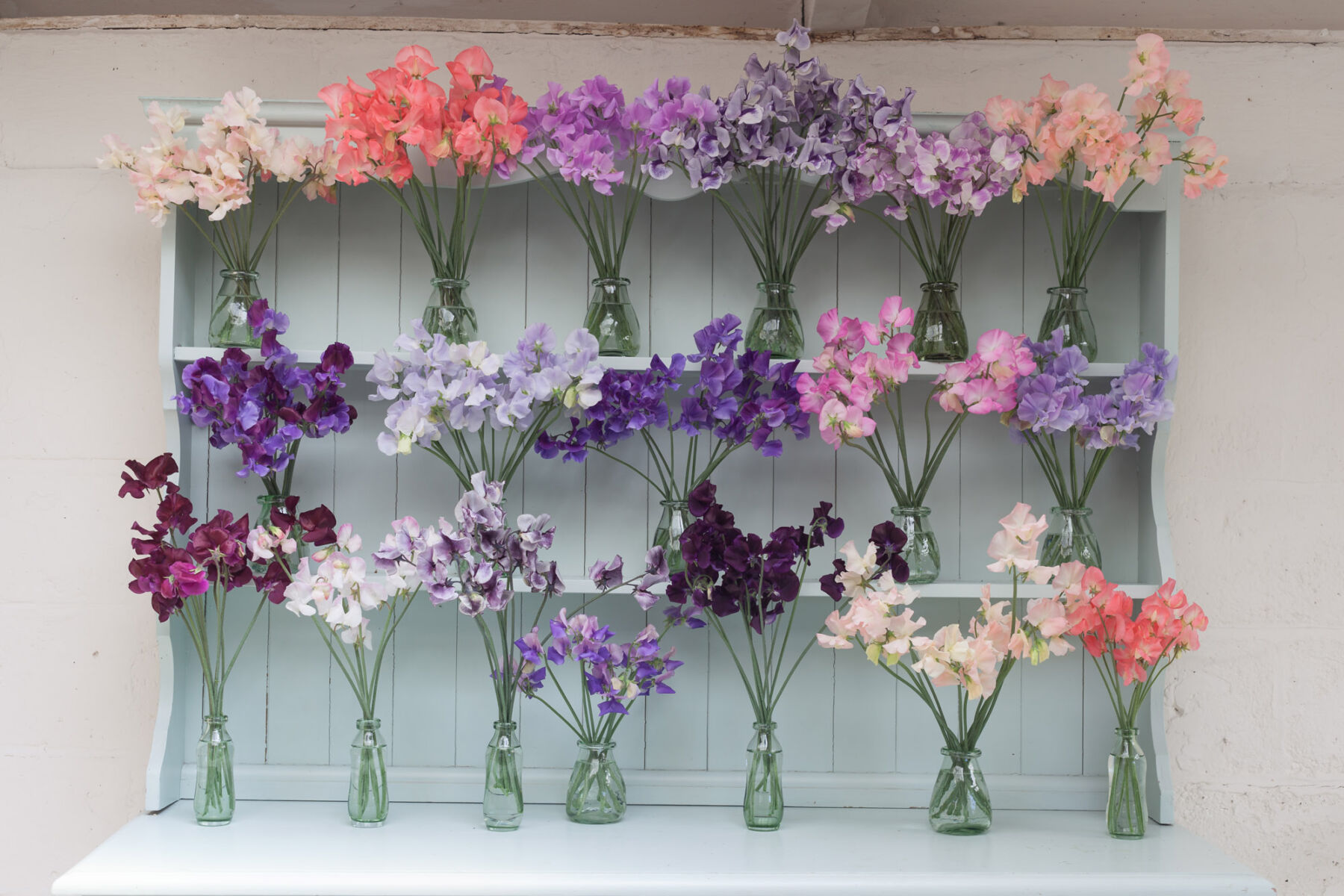
Liz at London-based Blue Sky Flowers takes a hybrid approach: “I use British flowers to supplement and add the delicate wiggle to my work as I can’t get enough to make my weddings fully local…I have a network of growers and have found more this year who are growing more and expanding – I love supporting them and plan to do so more and more.”
Many of our Report contributors passionately argue the case that not only are you ticking an environmental box when you use locally-sourced flowers, but it’s better for achieving that highly desirable, natural aesthetic:
“The challenge and reality of floral design is to create enthralling and beautiful designs with what’s available. To work sustainably, we must educate that fixating on a specific variety is unworkable if you want a wedding using flowers from this country, as many are. We welcome this irregularity and unpredictability which is one of many reasons we love working with flowers. Our clients understand this and trust that we will honour their vision using substitutions if needed. We continue to place more importance on overall feel, storytelling and palette which is the reassuring constant.” – Hazel Gardiner, Hazel Gardiner Design
“Brexit and Covid have made it harder and harder to source flowers from Holland and further afield, and that can only be a good thing. My wish is that we will appreciate the fabulous growers who have sprung up all over the country. Flowers are so transitory, you really only have a nano second to enjoy their beauty once they are picked. So why not make sure that your wedding flowers are the freshest most fragrant blooms sourced from a grower closest to your wedding venue.” – Fiona Haser Bizony, Electric Daisy Flower Farm
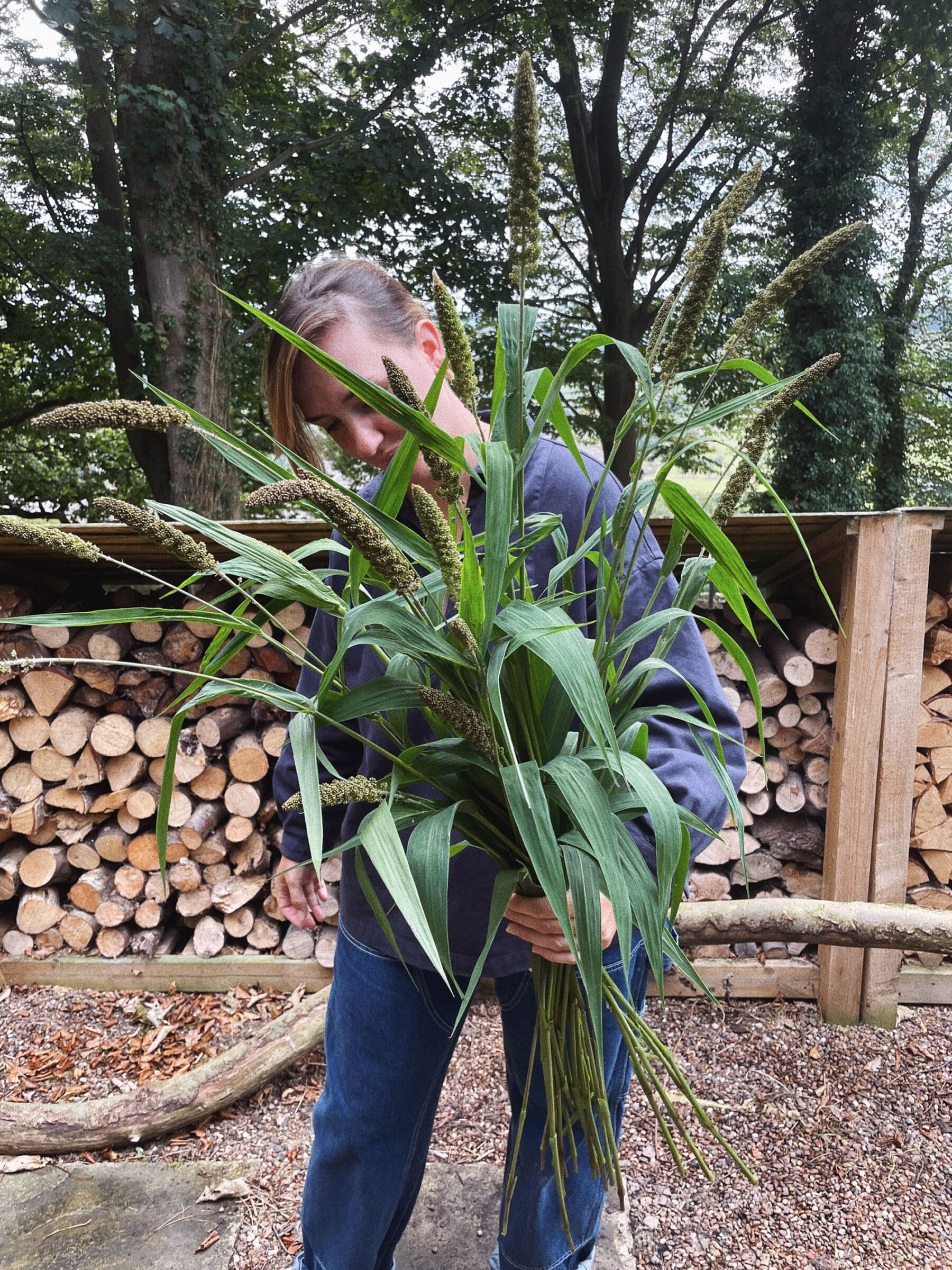
“Increasingly we have enquiries from those who have a real appreciation for British flowers and are invested in the journey we’re going on at Honour Farm. These clients want to work with the colours we love growing the most, meaning we can cultivate larger crops of our favourite blooms. For us that’s tonal shades of blush pinks, peach, orange, soft yellows and plenty of white – perfect for wedding work. Every year I hone in our curated selection flowers based on what varieties are most prolific for cutting and last well in both a vase, bouquet or for installation work.” – Hattie Shackleton, Honour Farm Flowers
“Our couples are increasingly interested not just in seasonality but in having as many aspects of their wedding as possible ‘locally sourced’. In the same way that you can trust a great chef to make memorable dishes using ingredients that have been grown at the location or on soil nearby, we work with couples who choose us because they trust us to make the backdrop to their day fit seamlessly with the surroundings. That’s often because we use flowers, foliage or plants that we know are growing nearby. We tend to work on weddings where there are great gardens and one of the most exciting parts of our work is getting to know that garden, and most importantly what will be growing there on the day of the wedding. There will be tiny ingredients in the bouquet that can also be found in the garden. The floral pieces that the guests look at will reflect what’s growing outside. Using flowers that grow at that place, on that day, will forever anchor the couple to that moment in time.” – Sarah Statham, Simply by Arrangement
Sarah at Simply by Arrangement usefully points out that while demand for locally grown produce is a huge positive, “2023 will I think be challenging in terms of being able to buy enough locally grown flowers. We have seen over the last few years more and more wedding florists using locally grown flowers, which is a great thing. But, that increase in demand is potentially challenging if there aren’t enough growers out there to match that demand with supplies.”
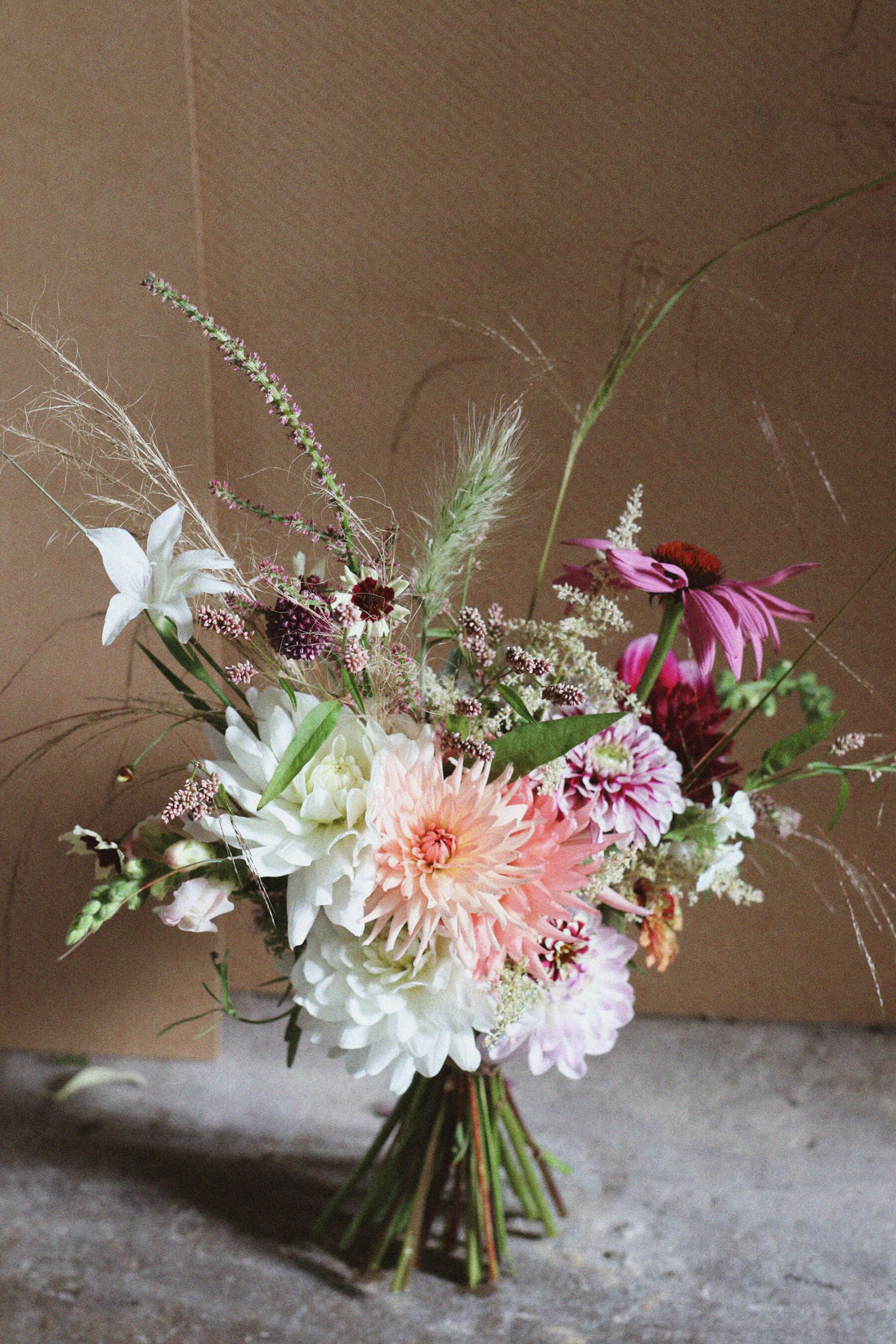
For engaged couples, that means appointing your florist perhaps earlier in the planning process than previous years. As Hattie at Honour Farm Flowers recommends, your florist can liaise with growers in advance “as often they’ll be happy to plan in larger crops if they know there’s demand for a certain flower. As this is a season led business we really rely on making our income during spring/summer, therefore we need to sell our harvests as soon as they come into flower (otherwise they end up on the compost heap). So keep those lines of communication open and I can assure you your grower will do everything they can to keep you in supply of the most exquisite flowers for your wedding or event.”
Notes of Advice:
- Locally sourced flowers support local business and economy in your community
- Locally sourced means less transportation, which is kinder to the environment and may give you better quality blooms
- Flowers that grow successfully close to your event may be more likely to fit effortlessly with the look and feel of your venue
- Seasonal flowers are more likely to be available for your wedding anniversary, a beautiful, meaningful celebration of your marriage through the years.
A Note on Wedding Flowers Waste
Sustainability is a journey rather than a destination, so I am always looking at how we can improve the cultivation techniques and processes of our business. Cel Robertson, Forever Green
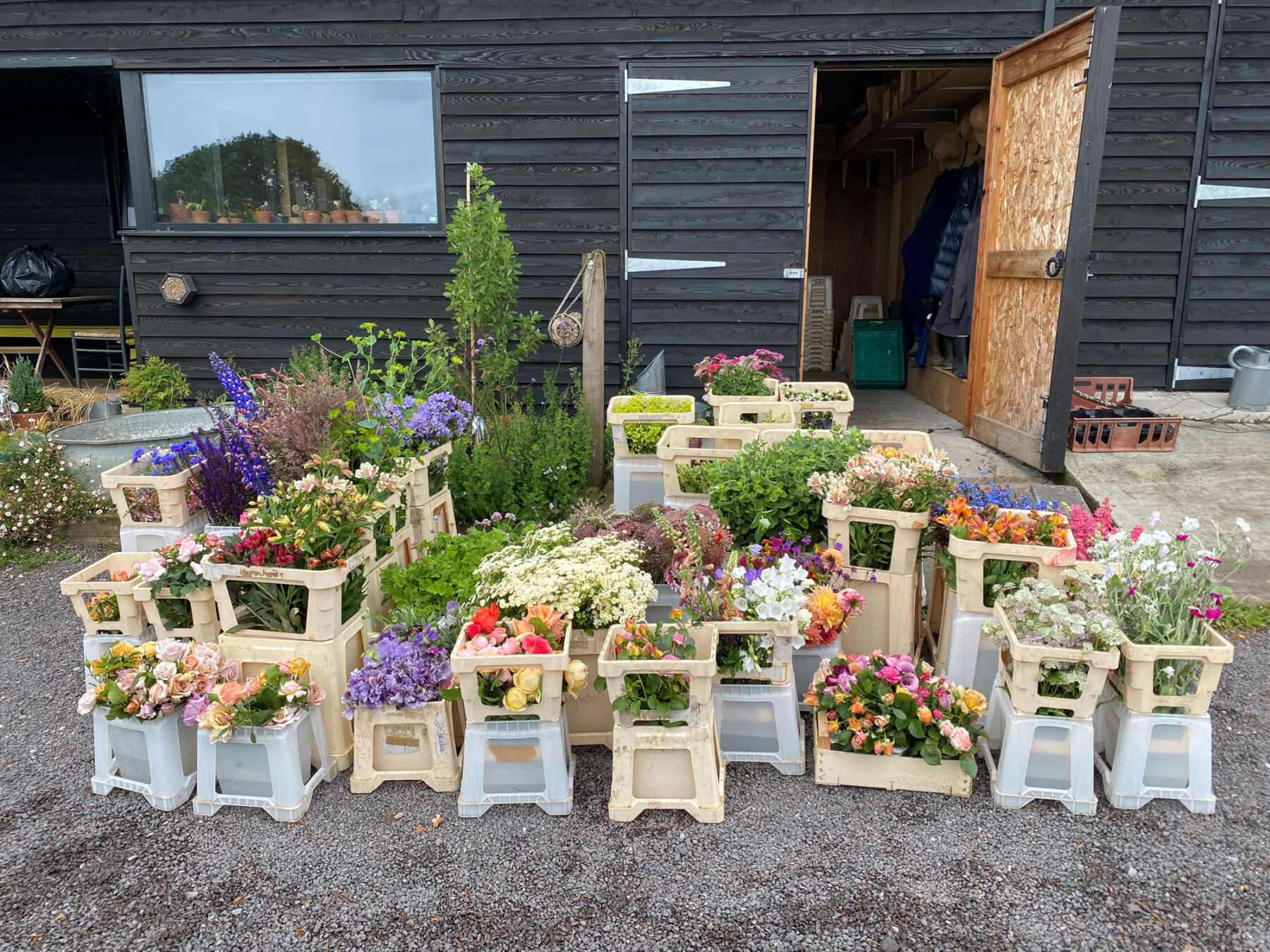
Reducing waste at your wedding is a seed you can plant right from the get-go of the planning process. As Fiona of Electric Daisy Flower Farm neatly puts it, the aim is “to leave the lightest footprint.” Across catering, outfits, gifts and beyond, it is just an all-round good thing. Not a trend by any means, but let’s give a shout-out to the floral industry businesses who are challenging themselves to make improvements themselves and on behalf of their clients:
“At the end of an Electric Daisy Flower Farm wedding or event, we repurpose flowers for the guests to take home. Any blooms left over are composted on the farm and will find their way back onto the flower beds as nutrition for the next crop. All our sustainable floral mechanics and vases are cleaned and put back into the store. The only waste we had in 2022 were small balls of pot tape, something I would like to work on so that we can truly say we are zero waste.”
Integrated sustainability is a unanimous mood voiced by all the contributors featured here. Paula Rooney, whose floral design studio operates in the ultra-luxury market and features on Channel 4’s Billionaire Blooms, notes for 2023 she is “excited to see everyone’s progress in making their businesses more sustainable and hear the stories of how they are doing this…All florists can improve the sustainability side of our businesses and we should celebrate and share these small wins, while always researching and striving to improve.”
Even with the biggest budget imaginable, in 2023, waste is never luxurious.
Climate Change and Extreme Weather
It is commonly observed, that when two Englishmen meet, their first talk is of the weather; they are in haste to tell each other, what each must already know, that it is hot or cold, bright or cloudy, windy or calm. Samuel Johnson, June 24, 1758
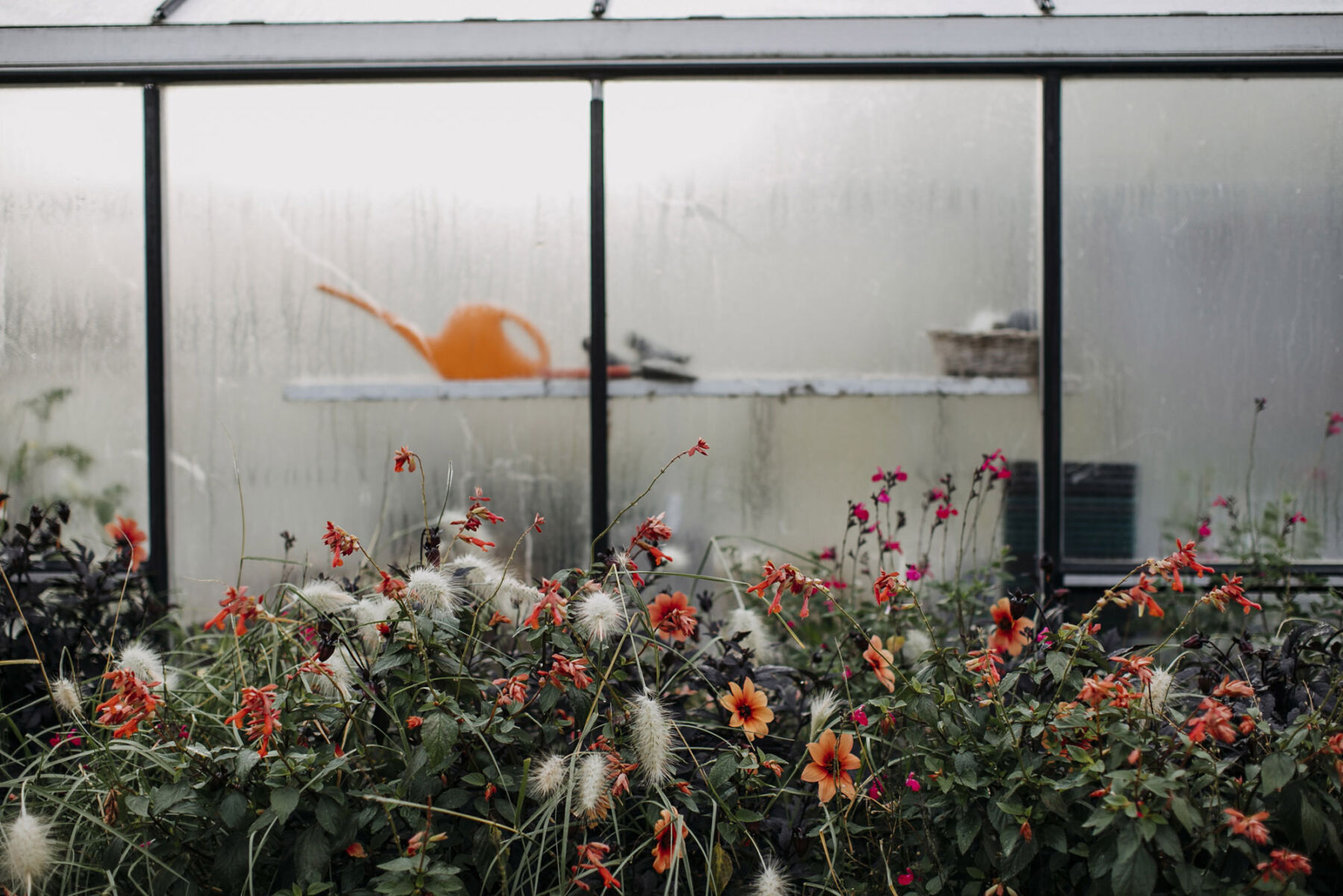
With fond, cosy nostalgia we can giggle at the British tendency to be delighted/appalled/outraged at the changeability of weather. In researching this modus operandi, I stumbled across a BBC article featuring a study claiming: “94% of British respondents admit to having conversed about the weather in the past six hours, while 38% say they have in the past 60 minutes. “This means at almost any moment in this country, at least a third of the population is either talking about the weather, has already done so or is about to do so”, says social anthropologist Kate Fox, within the BBC article.*
Talk of unpredictable weather and weddings may go hand-in-hand, but 2022 saw growers devastated by extreme weather and floral stylists contending with marquees and venues either hotter than hell or battered by freak storms. It is the immediate manifestation and tangible impact of climate change. “As flower growers, we are closely attuned to what’s happening weather-wise,” writes Cel Robertson of Forever Green, Norfolk “and 2022 has probably been the most challenging year I’ve experienced in all of my years of growing. The drought and heat of 2022 had a detrimental impact on our flower yields, and in a year where we were committed to supply a significantly higher number of events I found this incredibly challenging.”
Cel continues, “I’ve had many conversations with cut flower growers about how we can continue to build resilience in the coming years; both on an individual business level, and for the wider artisan-scale industry. 2022 has shown us how precarious it can be for growers who are reliant on the weather for an income, and with climate change the challenges will only become greater. Access to water is a huge issue, particularly in times of drought as we’ve seen in 2022.”
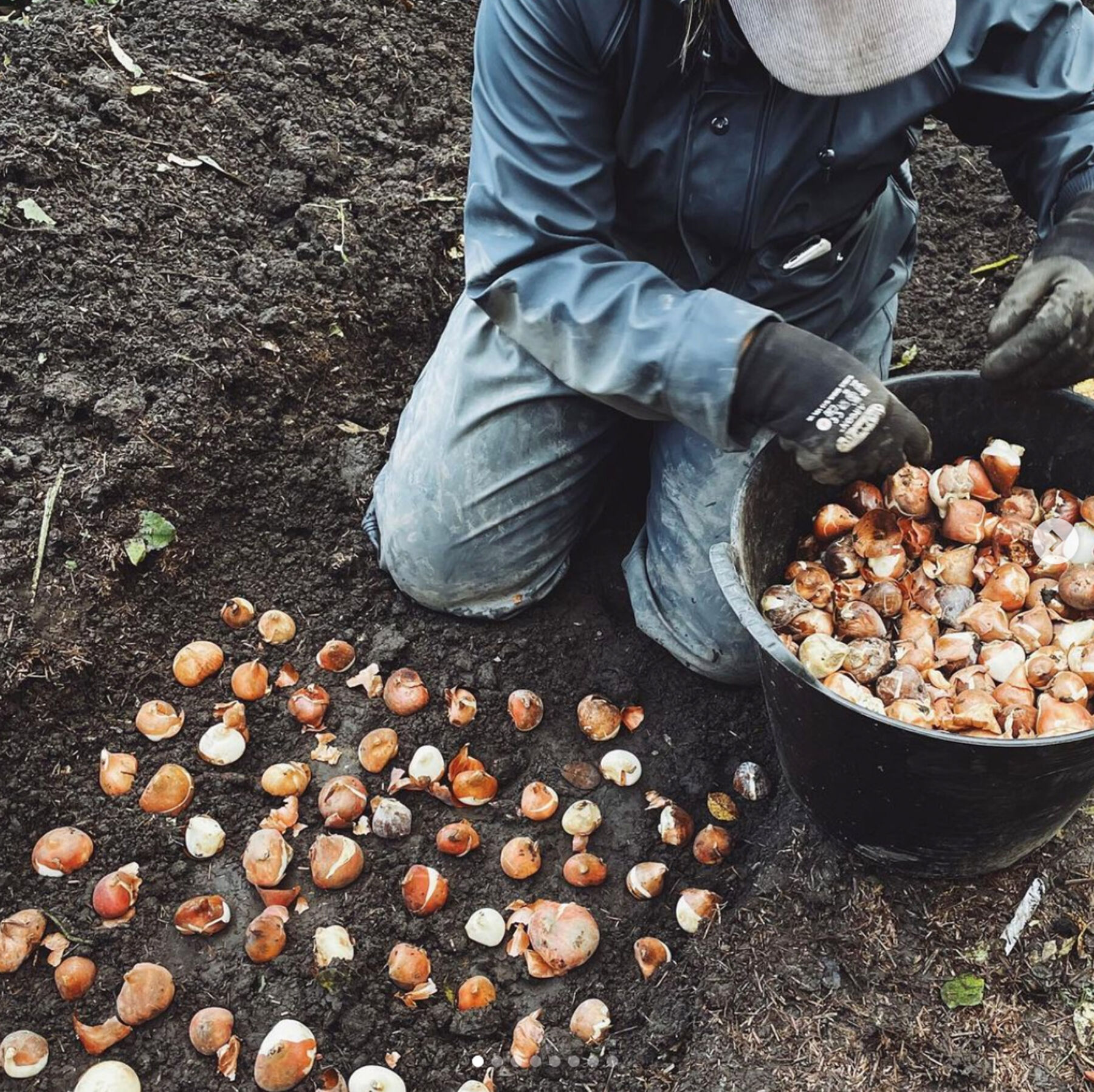
Sarah Statham of Simply by Arrangement in Yorkshire, concurs and notes the direct correlation with the success of your wedding flowers. “Our biggest challenge this last year (2022) was climate change. The summer heatwaves were hugely challenging in terms of keeping flowers alive for long enough to last our preparations, transportation and the wedding day/days.”
Hattie at Honour Farm Flowers says “This year one of our biggest challenges was of course the long hot draught we had over summer, something that didn’t affect us quite as badly as it did in other parts of the country but never the less impacted the lifespan of some of our annuals. We must adapt and change the way we work; every year we are adapting to climate change, the linear idea of set seasons is becoming more skewed, as we’ve seen over the past couple of years with dry springs and longer milder autumns, so we must adapt and change the way we work. I spend a lot of time documenting what tasks we do day to day as a record for future years to look back over which I find most helpful.“
I was keen to ask what solutions our community of growers are already working on:
“It has meant running a tighter ship and getting up earlier to ensure those flowers are cut in the cooler mornings before that shining, golden sun comes out to hit a high of 40 degrees. Sometimes leaving the cutting till very late into the dusky evenings, even after a few glasses of wine. Hosepipe bans and water restrictions meant some crops would have to be neglected and making a little wish with fingers crossed that they would pull through. Prioritising the watering became a little bit eeny, meeny, miny moe at times. The weather is a global test for the floral industry.” – Isobel Cole, Pickleberry Flowers
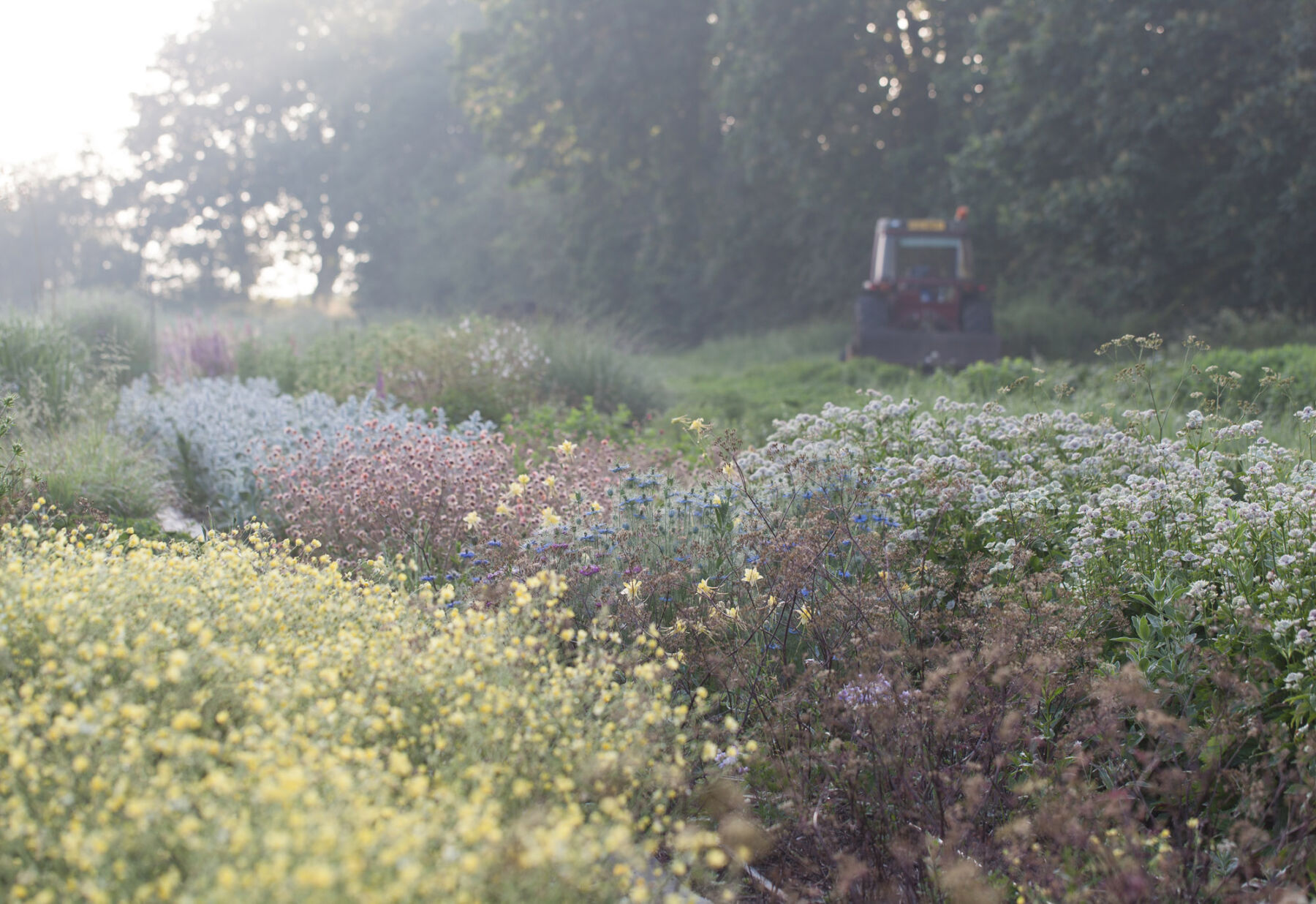
“As a grower I know that the weather frequently has a real impact on the varieties we are able to cut for our wedding couples. I always say that we cannot guarantee to supply a specific variety on a set date; we always request that our clients choose a colour palette that we will cut to, selecting the best seasonal blooms within that palette at the time of the event. That level of flexibility helps the grower to provide the best seasonal blooms for their couples and provides a truly bespoke mix of varieties for every event that we supply.” – Cel Robertson, Forever Green
“Many small-scale growers I know are planting more perennial varieties of flowers which perform more consistently in extremes of weather.” – Cel Robertson, Forever Green
“Both sorts of extremes can be supremely challenging but we have wet weather gear and the mechanics for keeping flowers hydrated where and when necessary.” – Liz Inigo Jones, Blue Sky Flowers
Rachel Siegfried of Green and Gorgeous Flowers says “2023 will be our fifteenth year of growing cut flowers for weddings and it has undoubtedly become increasingly difficult year on year due to climate change. Fortunately I have an adaptable team of pickers and florists so we changed the schedule harvesting the flowers at dawn and beginning the installation of marquee weddings at dusk. I was genuinely surprised at how well they stood up to the heat. Perhaps it was because they had been grown in similar conditions outdoors rather than coming from a cool chain like imported flowers”.
Rachel’s book, The Cut Flower Sourcebook, which tackles the question of how to carry on growing cut flowers in the face of climate change is published in March 2023.
Floral Notes of Advice:
- Many growers report 2022 was their most challenging wedding season ever, due to extreme weather
- Growers are using this experience to prepare for similar challenges in 2023, adjusting their working hours and planting plans
- Couples should prepare for extreme weather scenarios within their wedding planning
- Ask your florist how your wedding design could best accommodate potential extreme weather
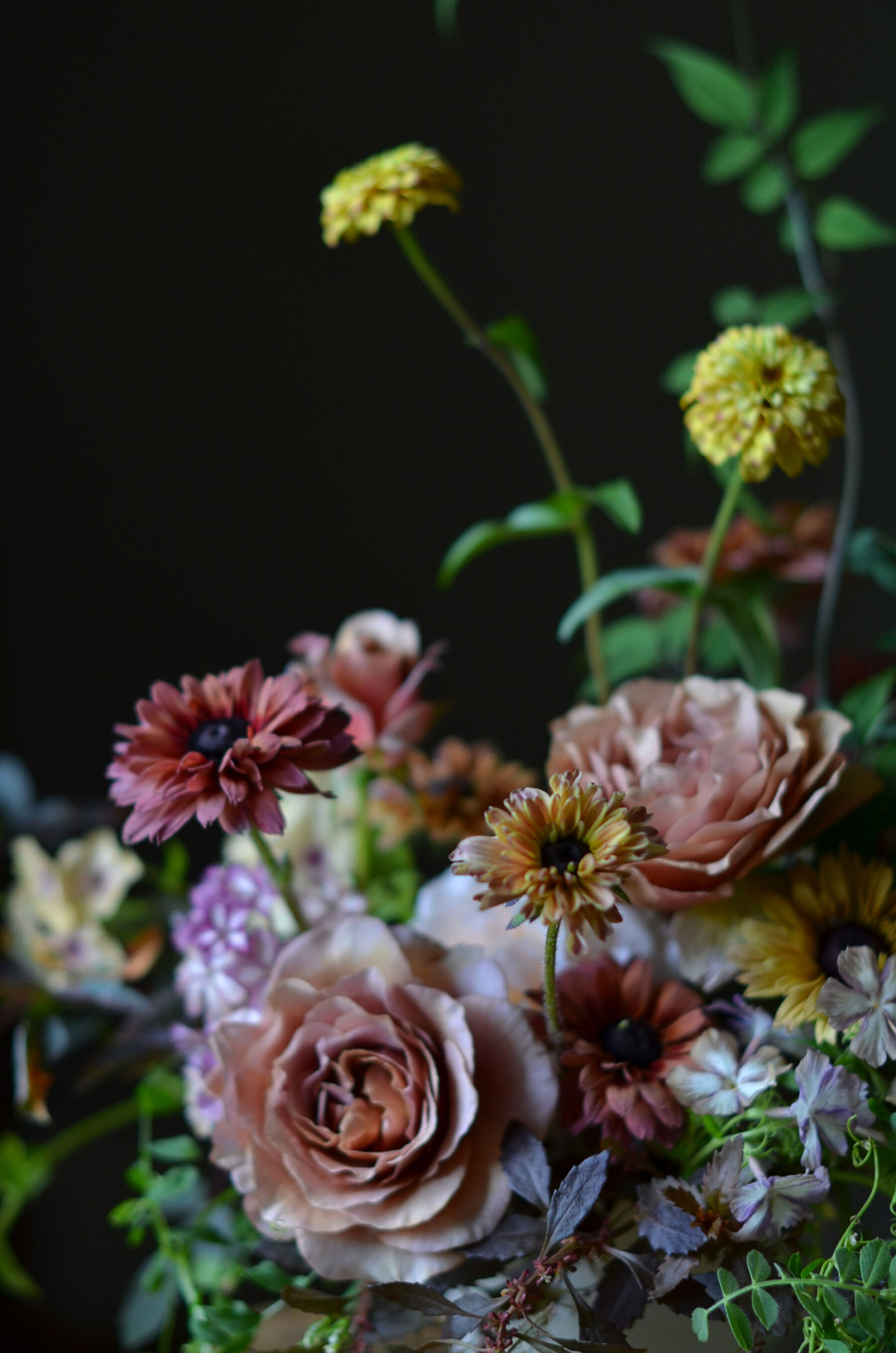
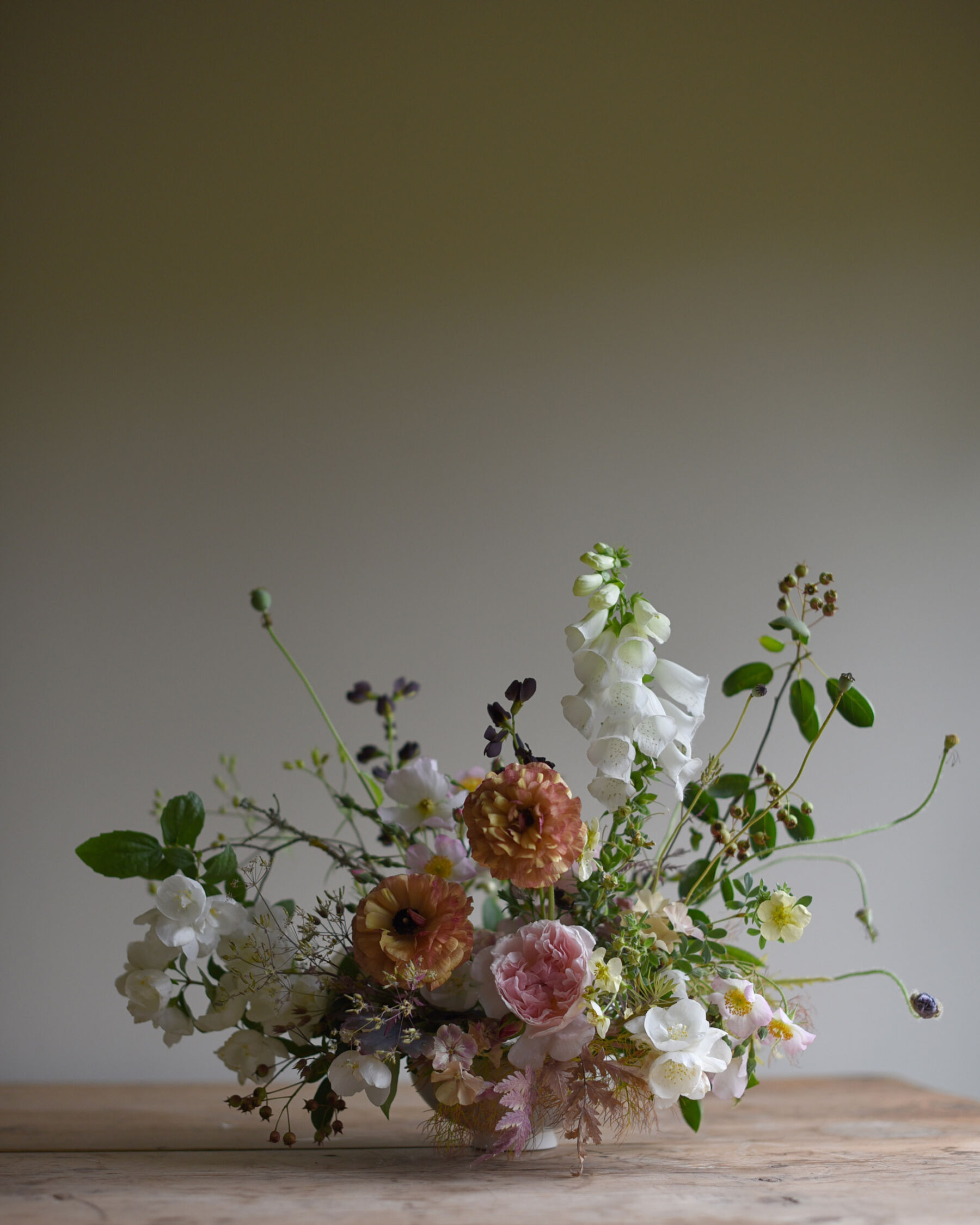
The Evolution of Luxury Wedding Flowers
With all this talk of humble flowers and light footprints, I wanted to ask Paula Rooney – who flowers some of the most lavish and extraordinary weddings conceivable, what is luxurious in 2023?
“To me, luxury is all about the layers of details. It is much easier to throw every trend at a design, but we take a really considered approach to our weddings and events and make all of the little details count. It is important to make things feel quite natural, and use flowers and foliage in their natural forms, the way that they would grow in the wild, so that the elegance of each stem shines through. We take into account the depth of field, whether it’s for the perfect photo or for a guest’s eye line, creating layers of design and curating details and designs that flow.”
“Luxury is all about the small things, it doesn’t have to be the big showstopper design (although we do love creating these for our clients as well!). Layers of personal details and little touches that family and friends will notice. The five senses are also extremely important – it isn’t just about the visuals. The whole day has to look good, smell good, feel good, taste good, and sound good.” – Paula Rooney, Paula Rooney Design
I asked Paula to paint it for us, in the form of a fantasy brief from an imagined client:
“The ceremony would be beautiful and opulent in the gardens of a striking manor house on a cliff with countryside views. The drinks reception would be in the grounds of the house, surrounded by nature. Then when it is time for dinner – rather than go back into the house, the guests will be led to a hidden set of steps down to the private beach, where, on arrival, they will see a stunning stretch tent with amazing sea views, a total contrast to the ceremony. Picture elegance on the beach – full of florals, arches, and tunnels leading to different areas of the tent. Full production with beautiful lighting and layers of detail, with the sound of the sea in the background and the amazing view.” – Paula Rooney, Paula Rooney Design
Hand-scribe my name on a place card – I’m there! The call of nature is palpable. Perhaps Paula’s vision marks the evolution of luxury away from glitz and excess and celebrity to something more artisan, intimate and rooted to the luxury of freedom. The space and time to marvel at the sound of the sea.
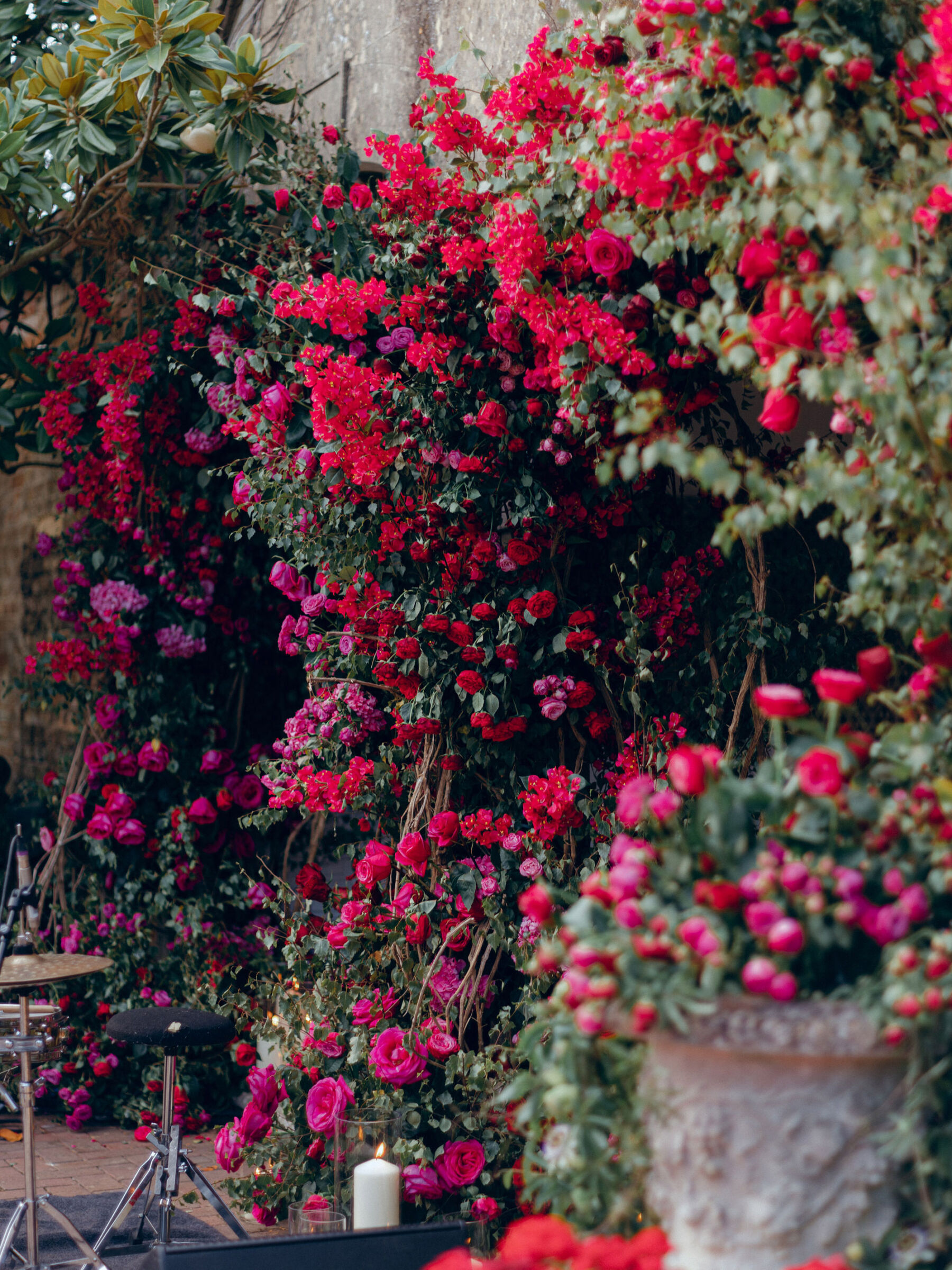
Specific Floral Trends of Note
1. Foliage
Liz at Blue Sky Flowers notes, “There is still a desire for lots of foliage décor” and our floral friends see massive potential in new and innovative ways to use previously overlooked greenery.
Isobel Cole of Pickleberry Flowers says, “For a while everything has been teamed with eucalyptus which is beautiful in its grey tone and fresh scent, but it is not native to the United Kingdom. I feel like moods have shifted and have been able to take step further by introducing weeds to the mixture. Take the beautiful Shepherd’s Purse for instance. The beautiful lime coloured, light and airy spire with tiny hearts disbursing from the middle like little fireworks couldn’t be more perfect for dainty bridal bouquet.”
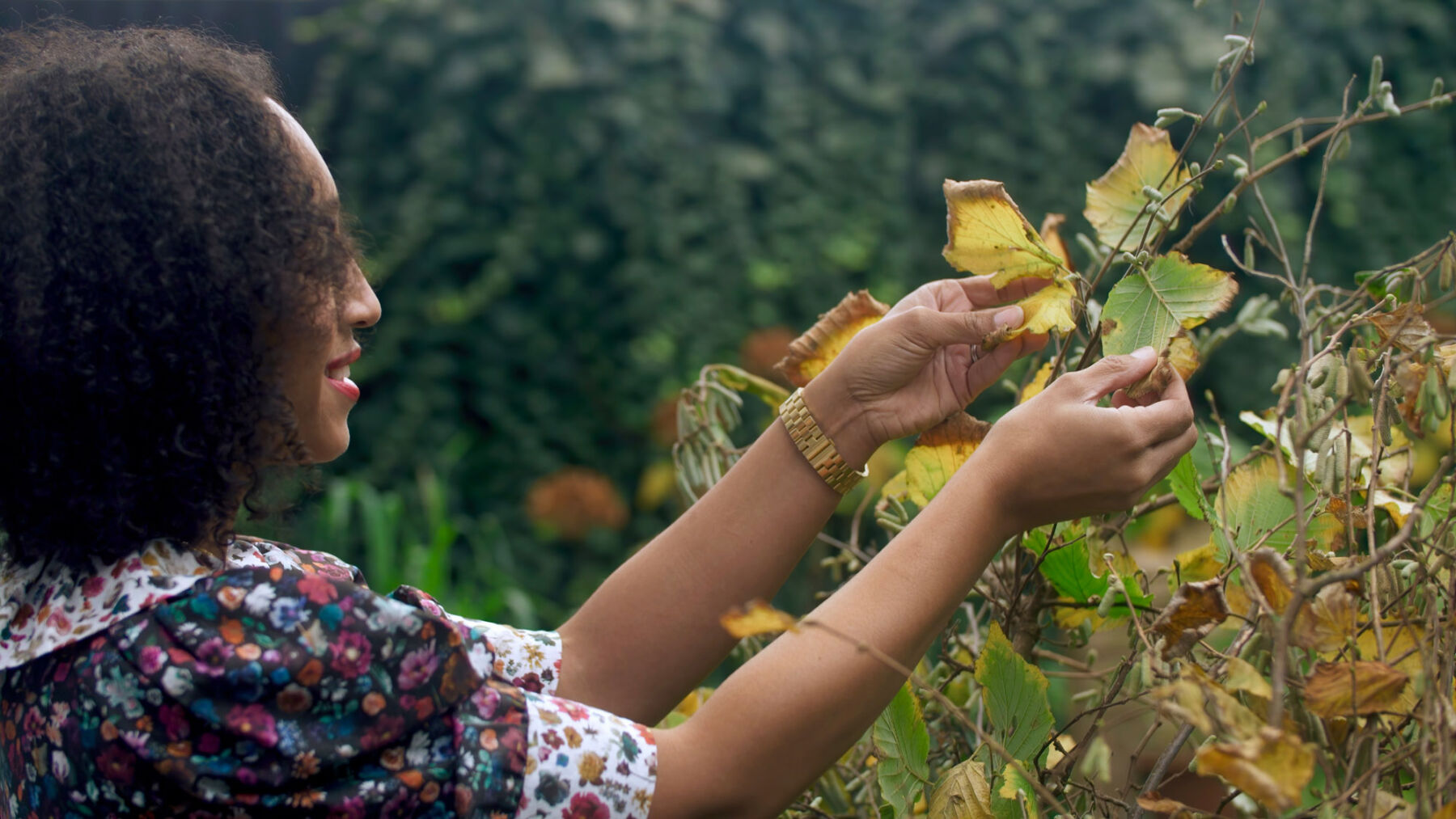
“I certainly would never pull this delightful weed from the ground of my bridal cutting garden. In fact, I pick some and show my clients and they too fall in love with it, what could be more romantic than tiny green hearts in your wedding bouquet. Another little pretty is Cinderella’s Slipper, a nettle which doesn’t sting and its flower looks like a tiny white pixie shoe. How wonderful and fairytale-like. It’s widely available across our beautiful countryside, can be found in backyards or usually growing somewhere nearby. Just don’t pick it unless you’re sure of what it is.”
Cel Robertson at Forever Green also flies the flag for local scented foliage:
“Some of our best-selling varieties for wedding work are scented foliage; scented pelargoniums and varieties of mint, all adding that elusive element of scent to floral arrangements. Scent is closely tied to memory, and incorporating seasonal scents into wedding florals is one way to make those memorable occasions extra special.”
Liz Inigo Jones at Blue Sky Flowers is nervous to mention the decline of enquiries for pampas grass as a key element of bouquets and arrangements this year. “It had such a fling a few years ago that I worry it may date a wedding like brown suits and matching shirts and handkerchiefs!” Barbara Smith at Wild Flower Workshop is also glad to see the trend fade; “I’m not against it per se, but when something becomes a fashion, my gut reaction is to move away and find an alternative. I love using grasses, the movement and fine texture they bring is gorgeous, but pampas is not the only grass out there and people are beginning to realise it.”
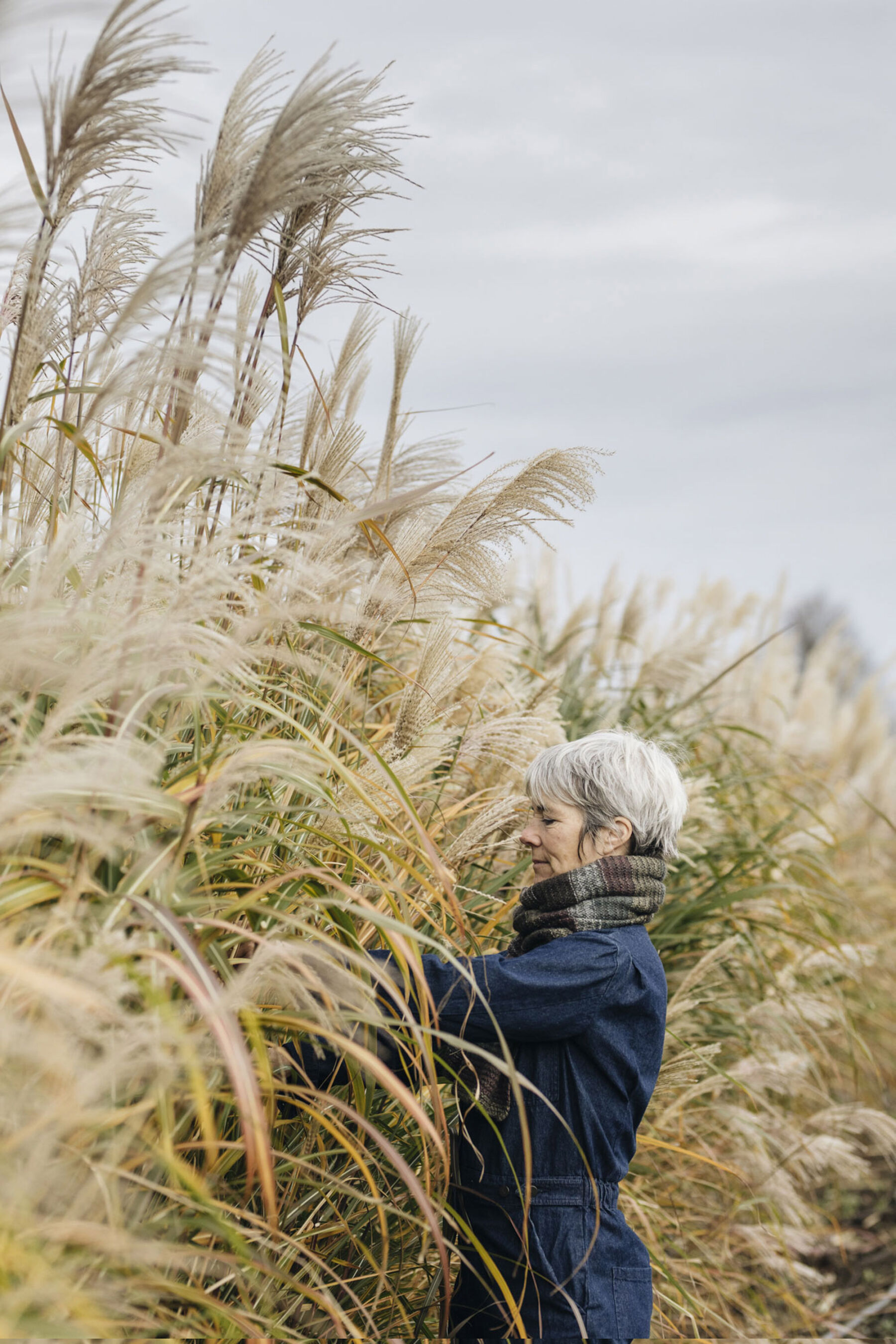
2. Humble Flowers
“In light of the challenging economic climate for many planning a wedding we continue to highlight the humble and to some, less fashionable, varieties. These overlooked blooms are often the least cost prohibitive. We will be producing a set of educational shoots focusing on how to design with one variety for our newsletter subscribers and IG followers. We have some creative collaborations and studio projects featuring daffodils and narcissus which we’re really excited about. We’re looking to grow and include more Chrysanthemums in our work.”
“It’s superbly hardy cut flower available in array of enticing classifications but it has a bad reputation which we want to turn around. We love feathery Reflexed varieties which are commonly mistaken for dahlias such as ChrysanthemumDorridge Crystal. The request for mocha and neutral palettes has continued into next year. Anemone Chrysanthemum Munidal Apricot and Chrysanthemum Allouise Salmon are fantastic alternatives to the much loved but premium Cafe Latte roses for example.” – Hazel Gardiner, Hazel Gardiner Design
Let’s throw the floral rule book away… It’s about creating a magical, natural feeling and tickling the senses. Isobel Cole, Pickleberry Flowers
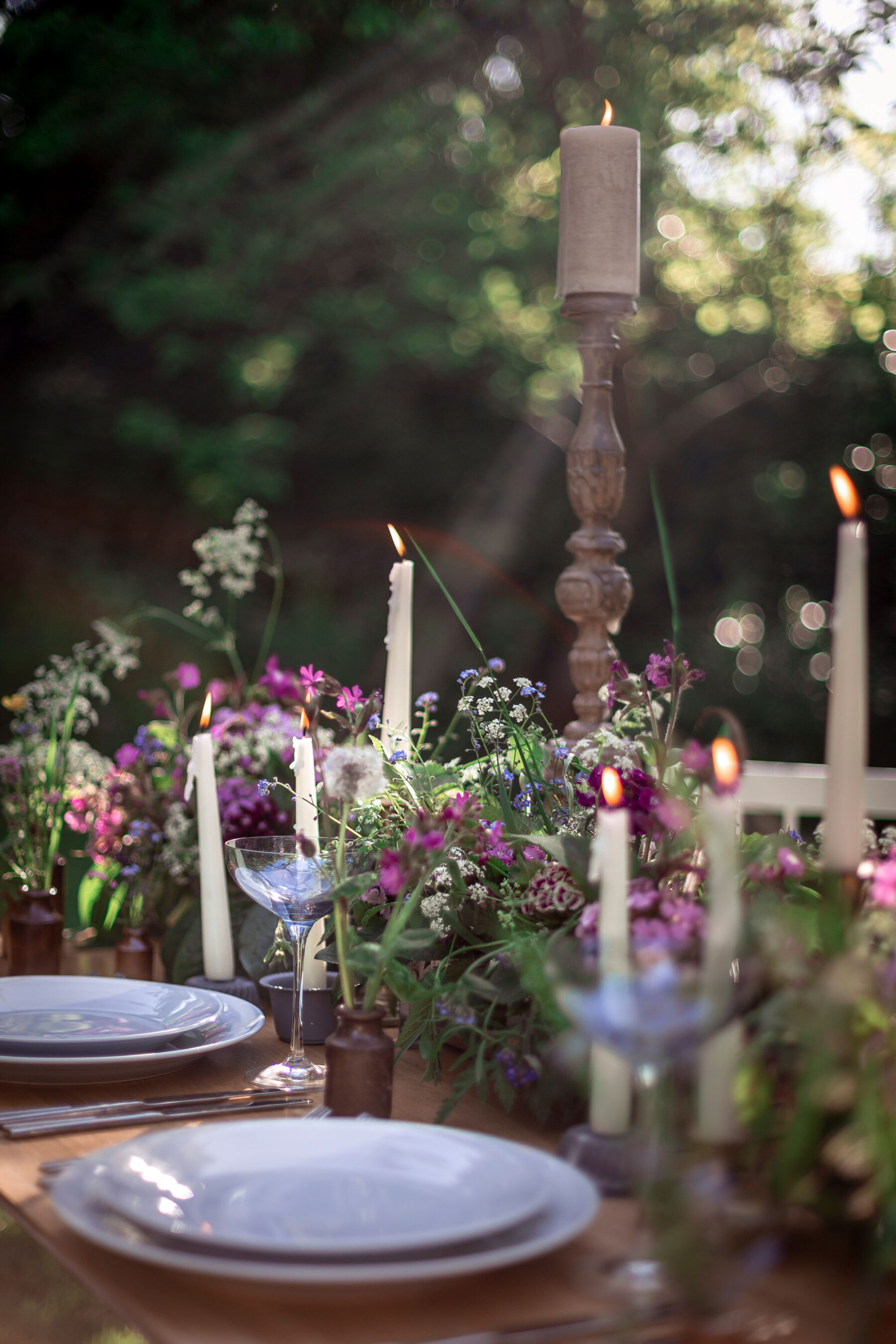
Isobel Cole at Pickleberry Flowers fully endorses the celebration of the humble flower in 2023:
“Can we use buckets full with frothy cow parsley that grows on the side of the road during May time and make it feel like beautiful clouds of cottonwool to walk between? Yes. Let’s throw the floral rule book away and not make a neat diamond shape pew end.”
“Instead, let’s trail and use Ivy, honeysuckle, scented jasmine for its shape, crawling around and cascading down the pew and flow into the next pew as if the wind has blown into its own a natural meandering shape. Or create a shape that has grown as if it’s always been there, like when all that grows and rambles around the princess in her castle as she sleeps. It’s about creating a magical, natural feeling and tickling the senses.”
Liz Inigo Jones of Blue Sky Flowers, is also keen to back the humble flower in 2023, not purely for cost purposes but equally for their visual creds; “Carnations have long been seen as cheap flowers, garage flowers if you like but there are some gorgeous colours emerging and they can certainly take their place in the best table design alongside peonies and ranunculus.”
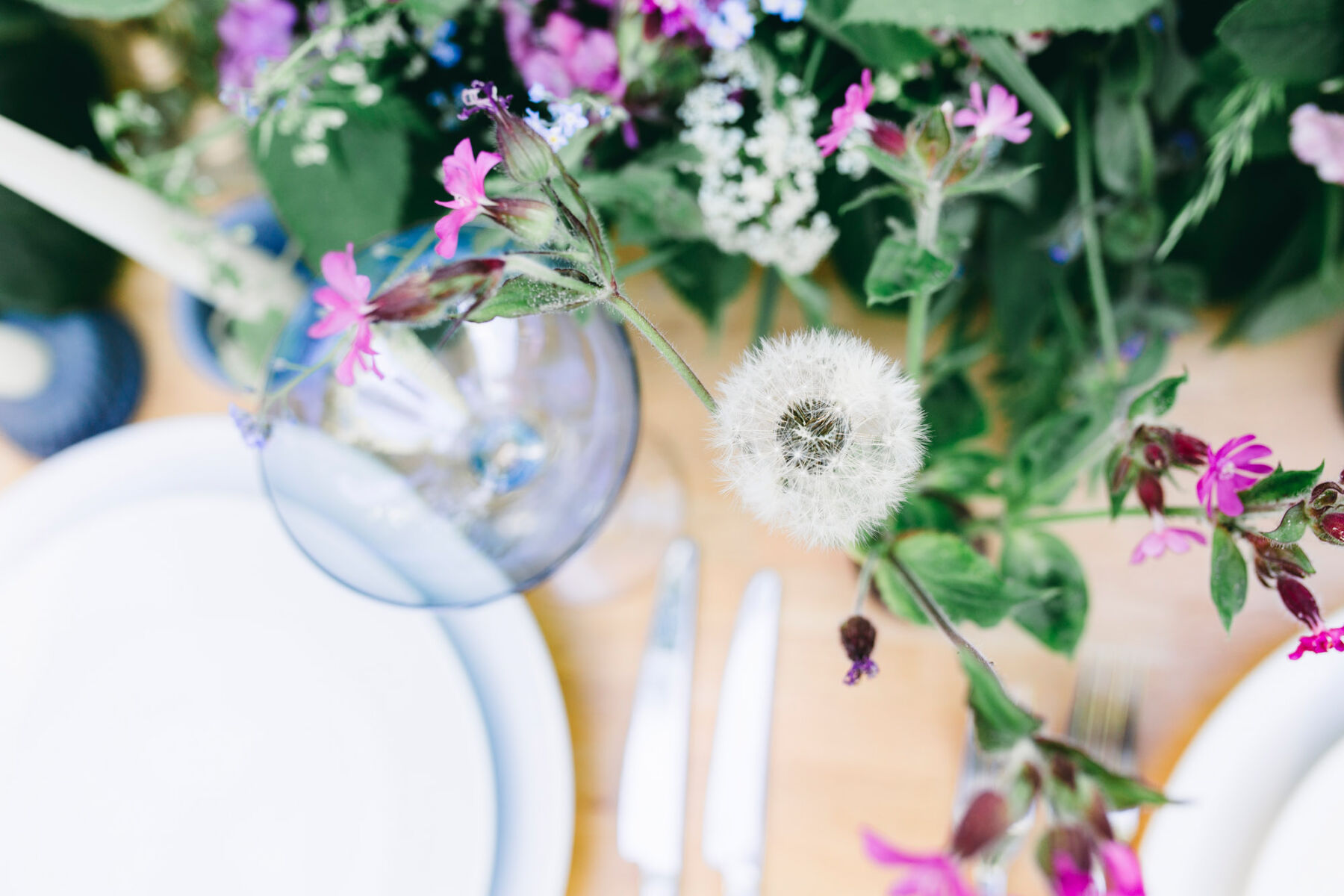
3. Bold and Brights
“2022 has definitely seen weddings moving towards more colour,” says Liz. “It started in 2021 I think, as the need for vibrancy and fun emerged from the previous year’s gloom.”
Barbara Smith of Wild Flower Workshop reminds us that ‘wedding’ doesn’t have to mean classic or pale or delicate:
“A conversation I had with a client a few months ago stuck with me; she thought she ‘should’ go for pale pinks and whites because well, that’s what you have at a wedding yeah? I asked her if her dark red hair, the deep plum of her jumper and the dark aubergine colour of her kitchen wall were more indicative of her taste and she suddenly saw that she could have wedding flowers that reflected her style and personality. Her whole tone shifted from being quite matter of fact to being really excited.”
“It’s exciting to see bouquets becoming colourful again,” adds Fiona at Electric Daisy Flower Farm . “I’m loving the sort of block colours coming through. We always advise against too many ingredients, preferring a strong graphic look. I would love to see more bold designs, pastels will always be popular but for the more rebellious amongst us, colourful bouquets are certainly a trend to follow.”
Paula Rooney is enthusiastic about Viva Magenta, Pantone Colour of the Year for 2023:
“We do think we will see this in 2023 as it’s so vibrant and bold but still quite romantic and feminine. We actually did a wedding this summer with lot of dark pinks and reds and it was absolutely beautiful. Some of the roses that are in this colour family do have a slight lilac tone to them as well and it is one of my favourite bold palettes to use, so we are super excited to see more of this in the future!”
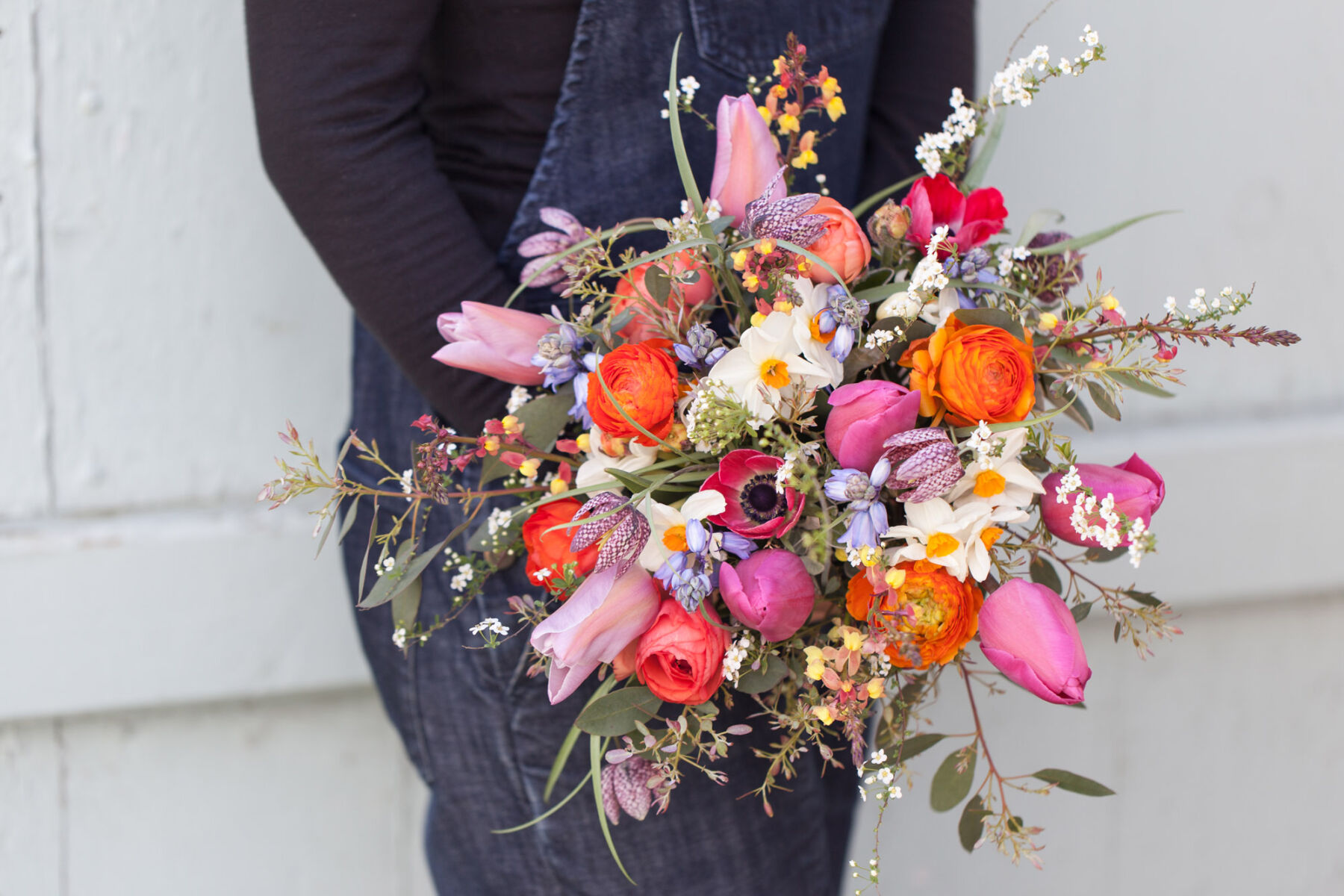
4. Neutrals
The trend for brown and yellow toned neutrals has been strong for a couple years (think a delicious blend of honey, caramel, toffee, mocha), and, says Barbara Smith of Wild Flower Workshop, “I’ve noticed that the trend for neutral colour palettes is still something I’m asked for a lot. This is fine by me, these colours naturally harmonise well with each other and when the colours don’t shout, I can shift the focus on playful textures and forms.”
As Paula Rooney notes, these neutrals are a perfect palette for “curated, minimalist style weddings, which are much harder than they sound to achieve! And while these designs will sometimes look simple they take a lot of design time to perfect. We’re seeing a desire for earthy weddings, lots of ceramics, curated minimalism with lots of textures and layers, and shading. Lots of creams and beiges with toffee and subtle hints of colour. We would love to something like this next year with a black accent as well.”
Cel Robertson of Forever Green has a few new favourites to inspire us:
“On the wholesale side of the business, orders for white, blush and peachy tones are always pretty consistent whatever the season! Anything that has a flush of peachy-apricot or nude is perennially popular, and annual Phlox drummondii varieties encompass that colour range with the element of scent which makes them perfect for wedding work. Soft, lemon yellow tones were also very popular in 2022 – I hope this continues as it’s such a lovely colour! There have been some lovely new varieties of cosmos available that fit this brief – Apricotta, Apricot Lemonade, Kiiro – and these are best found cut fresh from your local flower grower as cosmos really doesn’t travel well (particularly out of water).”
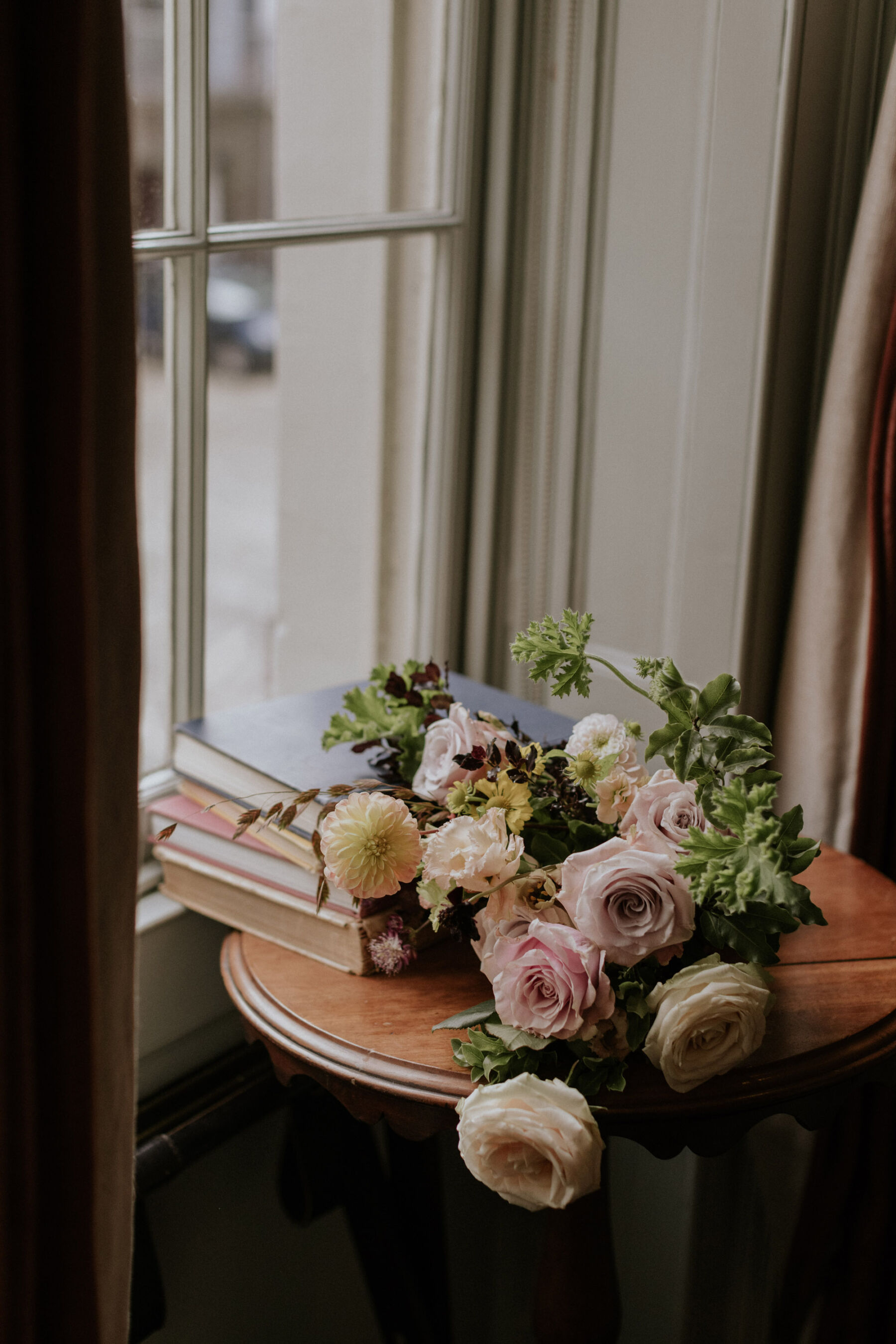
5. Statement Installations Trends
“It’s almost become about making a scene, having a statement piece, a focal point, a photo opportunity or feeling like something or an area is completely about you. This could be an arch, the top table, fireplace or above the dance floor for instance…” says Isobel at Pickleberry Flowers.
Here are three favourite ideas for statement installations proposed by our contributors.
Potted Plants and Hired Trees
“Another development has been including plants, namely trees instead of elaborate floral installations. Our tall feathery birch trees are very popular and will be hired out most weekends throughout the wedding season. They are then retired to our field where are they planted to grow on for foliage in the coming years. Using plants is not only more sustainable but a cost-effective way of making impact in a lofty venue space. They also don’t wilt when subjected to extreme heat and howling gales.” Rachel Siegfried, Green & Gorgeous Flowers
“Repeatedly we are incorporating potted plants into our work which has the benefit of secured longevity in even the most punishing heat alongside the ability for couples to replant or re-home to friends and family.” Hazel Gardiner, Hazel Gardiner Design
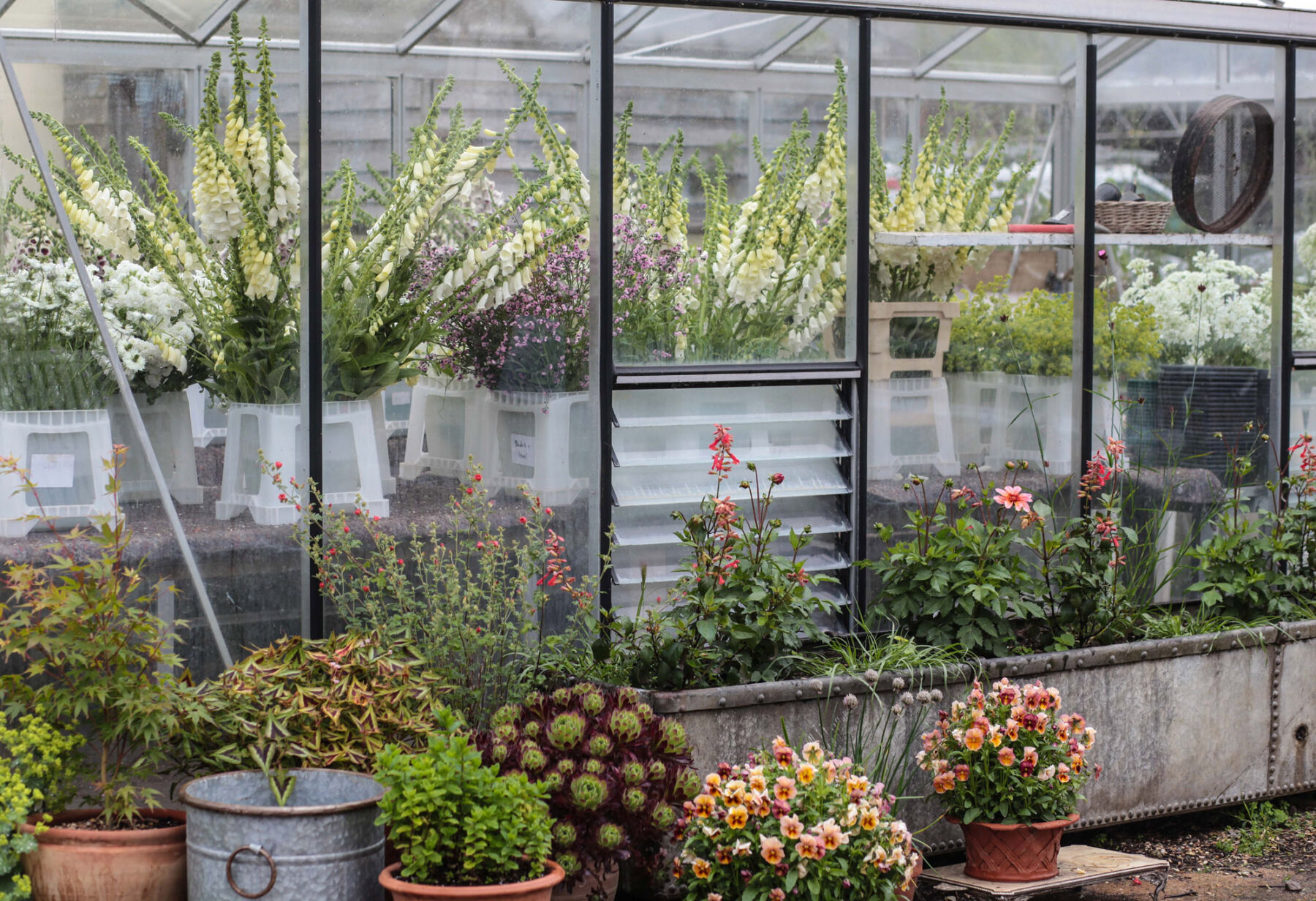
Floral Arches
“Before 2020, I had probably designed about four wedding arches. I’ve almost lost count of how many we’ve done now and they don’t seem to be lacking in popularity for the next year or so”, says Liz Inigo Jones of Blue Sky Flowers. We still love them and expect to see them in all their magnificent glory throughout 2023.
Love Letters, Loaded with Symbolism
“Last year we were selected to create the RHS Letters for RHS Chelsea Flower Show. Our design explored the importance of how woodlands benefit the food chain, biodiversity, human wellbeing and healing. Intertwined within decorative branches were British foliage, flowers and herbs selected for their edible, fragrant or healing properties. We invited visitors to take a moment, reflect and celebrate the supportive power of nature.”
“We always have a narrative behind our work, going beyond mere ornamentation. We’ve had requests for couples wanting to do the same asking our recommendations for symbolic edible, medicinal and therapeutic varieties. We also use our knowledge of floriography (language of flowers) to communicate meaning. We’ve found this distinction brings a huge wealth of added symbolism to weddings creating stronger memories for both couples and guests.” Hazel Gardiner, Hazel Gardiner Design
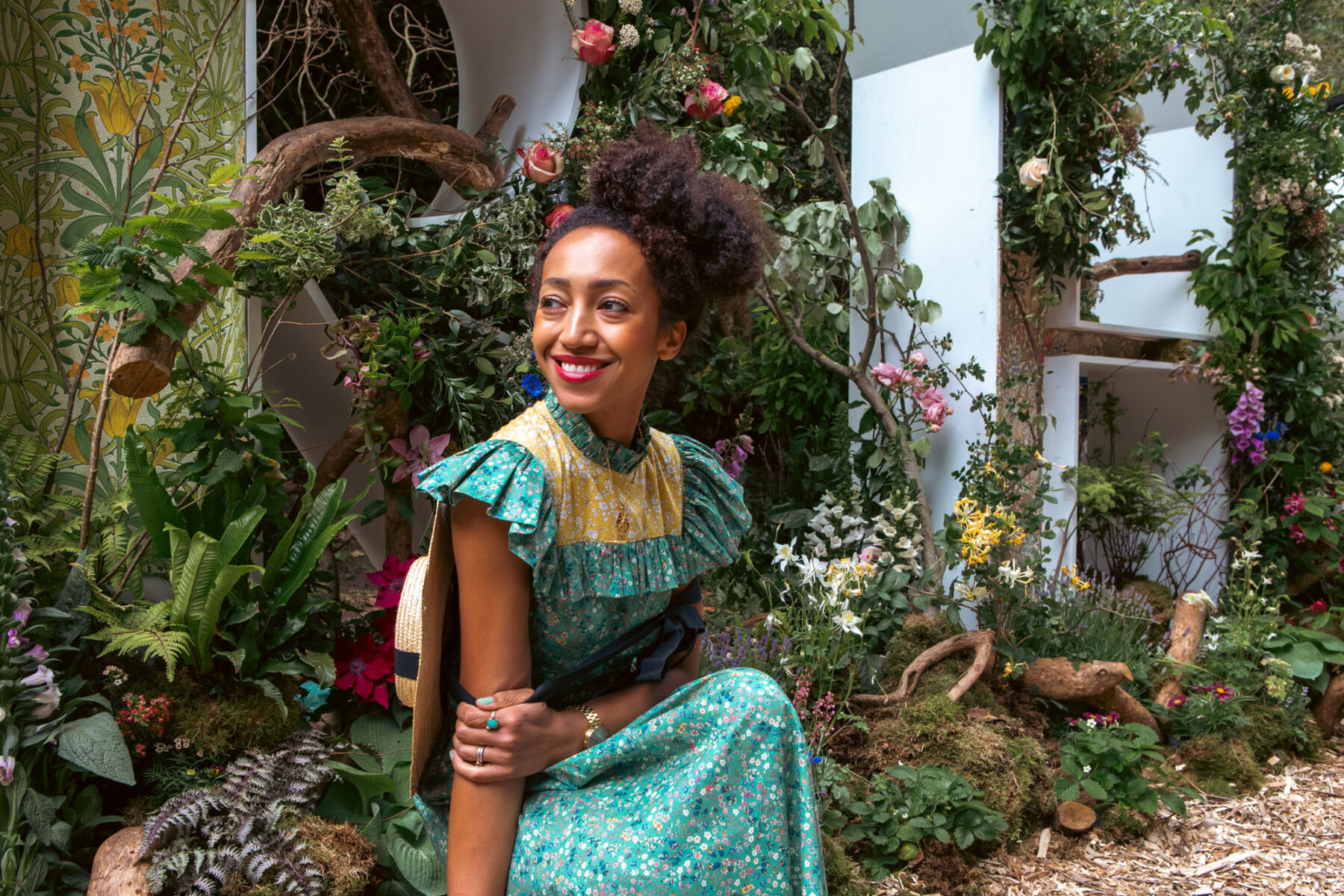
Floral Notes of Advice:
It’s my personal viewpoint that no wedding is timeless. The very point is to capture the love and romance and union at an exhilarating moment in time within your life’s journey. Some wedding styling ages well and some will conjure a cringe a decade or three down the line. But I don’t think ‘timeless’ is a fruitful goal.
The points above are observations, not a playbook. So, while our floral community may see a decline in requests for pampas in 2023, if pampas is your jam, go for it. Make jam.
Conclusion
Rachel Siegfried of Green & Gorgeous Flowers speaks of her “garden led approach”. It surmises a mood which encompasses much of what our contributors have so generously shared:
“I don’t do mood boards preferring to invite my clients to the farm the week before their wedding to walk the cutting beds with me. This gives me a really good sense of their style and what they like and importantly don’t like. I think it is a good deal easier for them to have those responses when they are looking at the actual flowers rather than remote pictures. Design their flowers from what is growing and looking at its seasonal best. This pick of the garden approach can still take into account their colour palette and mood coupled with a spontaneous twist. “
The plea of a spontaneous twist is equally reverberating around the floral community. “It may mean a little less stress for both parties if a degree of flexibility can be agreed upon!” says Cel Robertson, of Forever Green. For couples, it’s a change from the more prescription style of briefing a florist that belongs to recent Pinterest-governed years.
Flexibility is requested in order to achieve the following:
- Maximise blooms for your budget
- Minimise footprint on the earth
- Work harmoniously and responsively with unpredictable weather
- Achieve new luxury, that is intimate, meaningful, connected to time and place
Allowing us the freedom to work with what nature provides ensures that their wedding flowers will be truly unique and hard for anyone to replicate. By working with whatever is out there as any given time we can make you something beautiful, something unique, and something you’ll remember when it flowers again each year on your anniversary. Sarah Statham, Simply by Arrangement
We hope the 2023 Floral Trends Report has bought you some context behind your floral suppliers’ decisions and designs, as well as plenty of juicy inspiration.
Please take a moment to bookmark the website and follow the Instagram accounts of our contributors. And follow the conversation over at @lovemydress.
